Olive green house exteriors represent one of the most sophisticated and nature-inspired color trends gaining momentum in contemporary home design. This earthy, versatile hue bridges the gap between modern aesthetics and timeless appeal, offering homeowners a unique opportunity to create striking curb appeal. The popularity of olive goes along with the trend towards organic modernism, pulling the beauty of nature indoors and drawing inspiration from the natural world. Olive green tones evoke a sense of nature and modernity while offering a timeless appeal for homeowners seeking a unique facade. From bold contemporary statements to charming traditional approaches, olive green adapts beautifully across architectural styles, material choices, and regional preferences while maintaining its distinctive character.
1. Olive Green House Exterior with White Board and Batten Siding
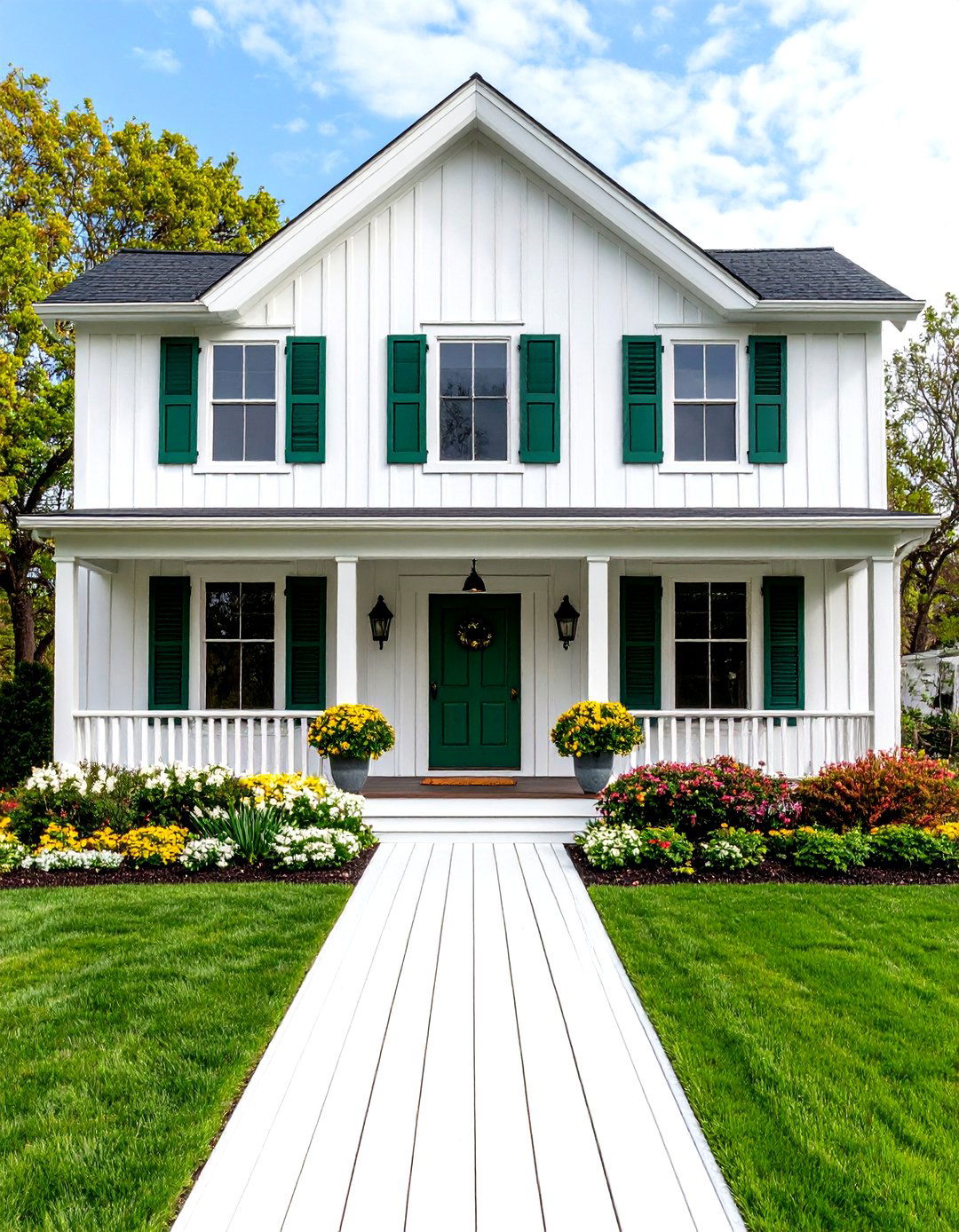
Combining olive green with crisp white board and batten siding creates a stunning contrast that emphasizes architectural details while maintaining classic appeal. White trim and shutters create clean contrast and draw out a cozy, familiar look that reflects traditional residential design. The vertical lines of board and batten siding draw the eye upward, making homes appear taller and more substantial. Board and batten siding helps create long lines on the building that draw the eye upward, adding a subtle, decorative touch to the home. This combination works exceptionally well on farmhouse and craftsman-style homes, where the white trim highlights window frames, corner boards, and rooflines. The olive green provides warmth and earthiness while the white elements ensure the home feels fresh and inviting rather than dark or overwhelming.
2. Modern Olive Green House Exterior with Black Trim Accents
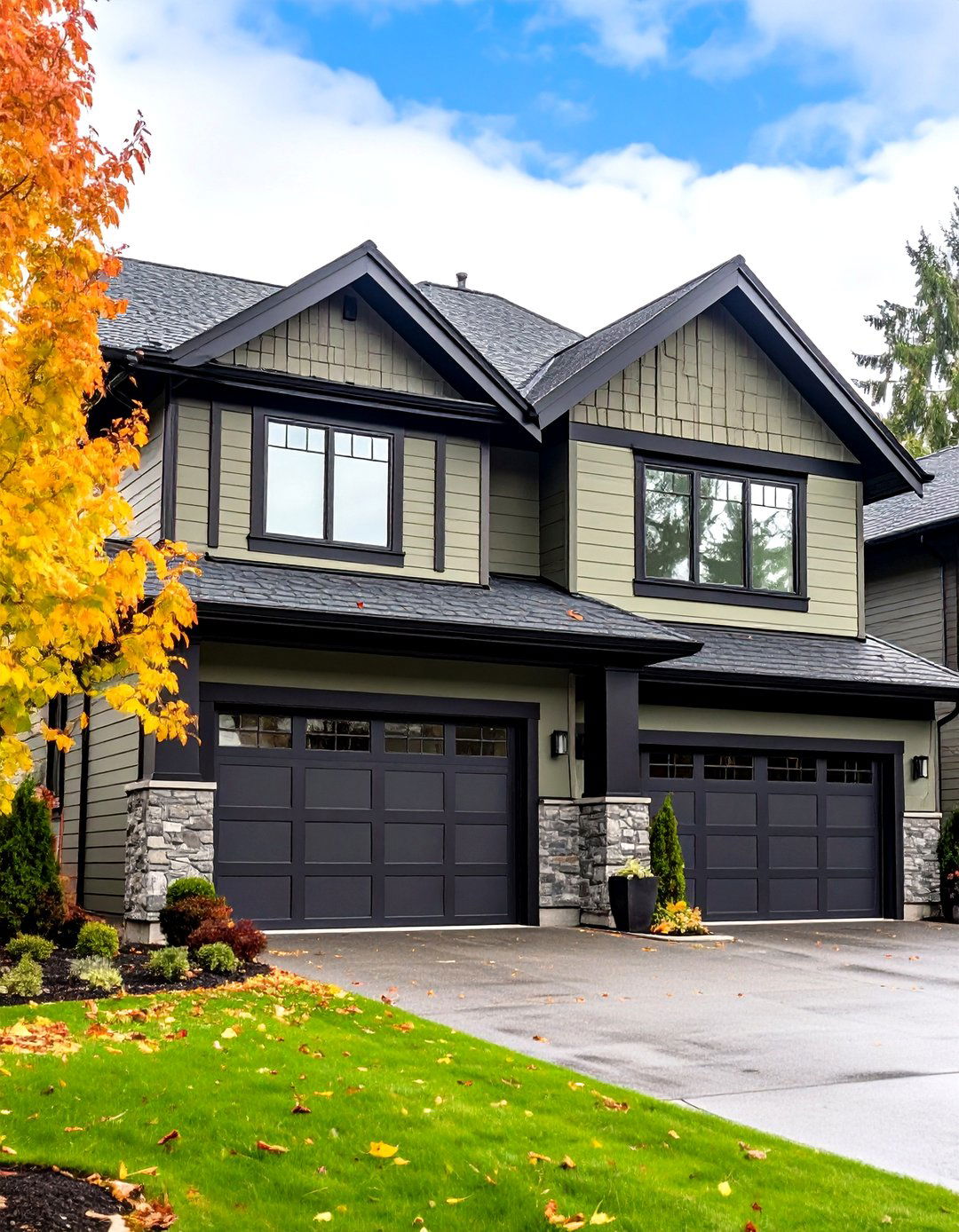
For homeowners seeking a sophisticated, contemporary look, pairing olive green siding with black trim creates dramatic visual impact. The formal nature of black exterior elements paired with deep green siding adapts beautifully to any home style. This high-contrast combination works particularly well on modern and transitional architectural styles where clean lines take precedence. Benjamin Moore's Dakota Woods Green is a deeply saturated, rich olive ideal for a dark and moody palette paired with Sherwin Williams' Tricorn Black — one of the deepest black paint colors. Black window frames, garage doors, and front doors create striking focal points while maintaining the home's overall elegance. The olive green serves as a rich backdrop that feels both grounded and current, perfect for urban or suburban settings where standing out from neighboring homes is desired.
3. Craftsman Style Olive Green House Exterior with Stone Elements
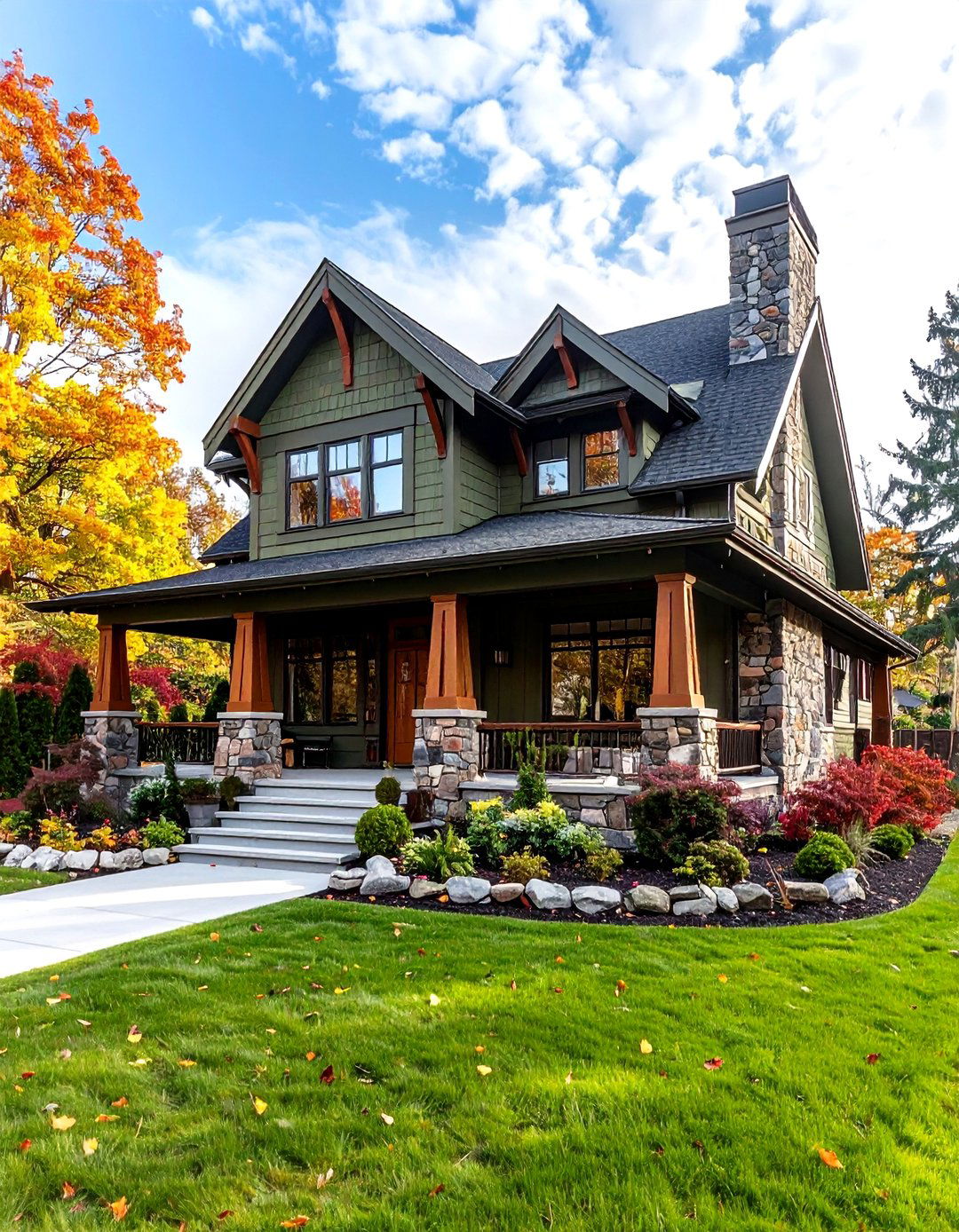
Craftsman architecture finds perfect expression through olive green siding complemented by natural stone accents and features. When choosing paint colors for your Craftsman-style home, use colors that make the architecture stand out. This Craftsman house was given a fresh coat of olive paint with white and cranberry trim. The combination of olive green with stone foundations, chimney details, or porch columns emphasizes the style's connection to natural materials and handcrafted quality. Notice how the stone chimney pairs perfectly with the warmth of the green siding, while the entryway door shows off beautiful wood grain for a natural contrast with the surrounding siding. This approach works beautifully with exposed rafter tails, tapered columns, and wide front porches that define craftsman design, creating a harmonious blend of color and texture.
4. Olive Green House Exterior with Natural Wood Shutters
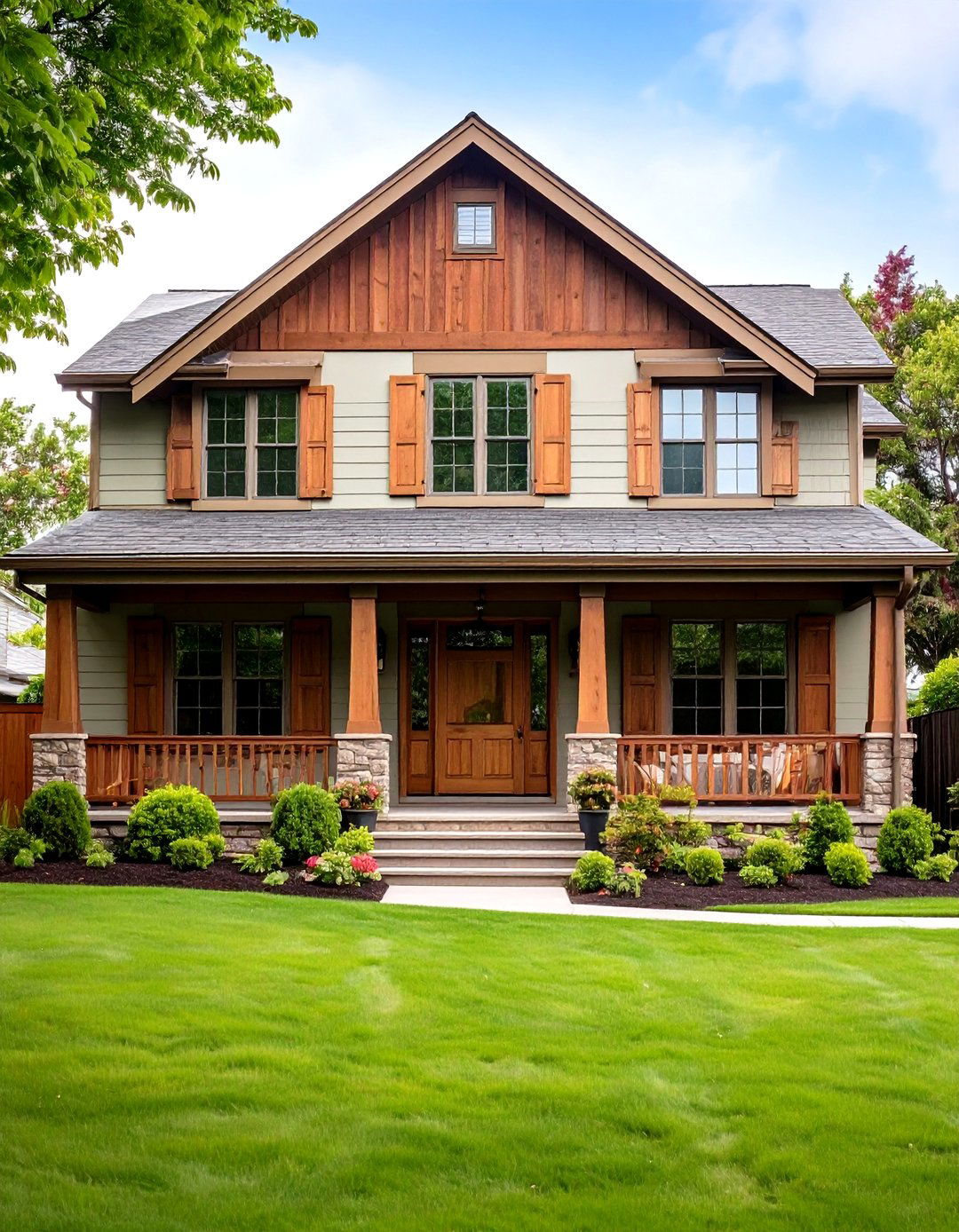
Natural wood shutters provide warmth and texture against olive green siding, creating an inviting and organic aesthetic. A stucco house in a muted green shade, enhanced with natural wooden shutters, providing a warm and earthy feel. This combination works particularly well when the wood is left in its natural state or stained in rich browns that complement the green tones. The wood grain adds visual interest and prevents the exterior from appearing flat or monochromatic. Cedar, mahogany, or reclaimed wood shutters can be functional or decorative, depending on the home's needs and architectural style. This approach suits both traditional and contemporary homes, with the natural materials creating a connection to the surrounding landscape while maintaining sophisticated curb appeal throughout changing seasons.
5. Mediterranean Olive Green House Exterior with Terracotta Details
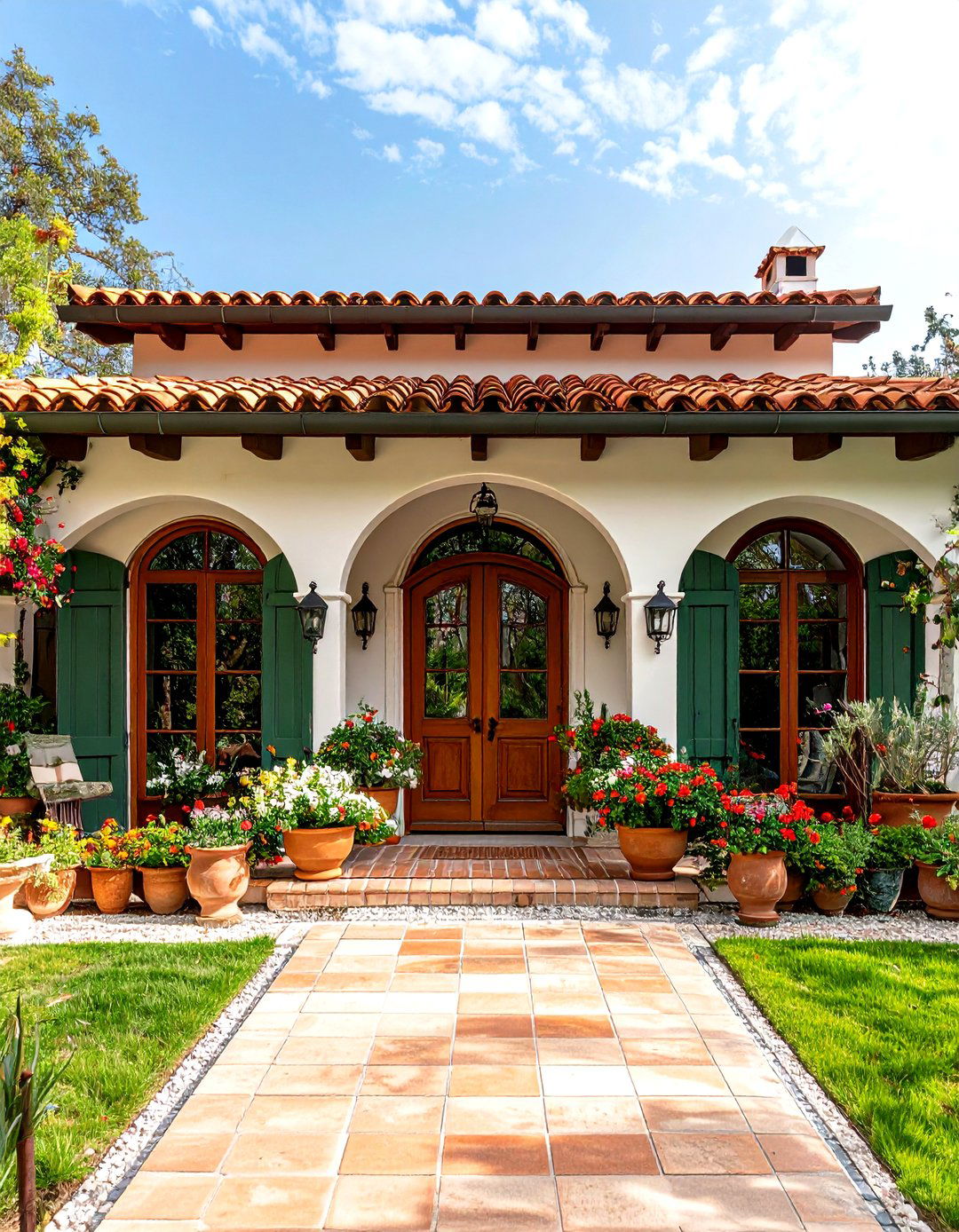
Mediterranean-inspired design reaches new heights when olive green walls are paired with warm terracotta accents and architectural details. A Mediterranean inspired exterior design brings olive green walls, terracotta accents, and warm stone details together for a sun-kissed aesthetic. Think of arched doorways, wrought iron fixtures, and a gentle interplay of light and shadow that create an inviting, vacation-like atmosphere. Embrace the warmth of Mediterranean aesthetics by incorporating terracotta details alongside the dark olive green exterior. This combination evokes visions of Mediterranean villas, infusing your home with a sense of timeless beauty and relaxed sophistication. Clay tile roofs, terracotta planters, and wrought iron details complete this warm, welcoming look that transports homeowners to sun-drenched coastal regions while maintaining practical functionality for various climates.
6. Farmhouse Olive Green House Exterior with Wrap-Around Porch
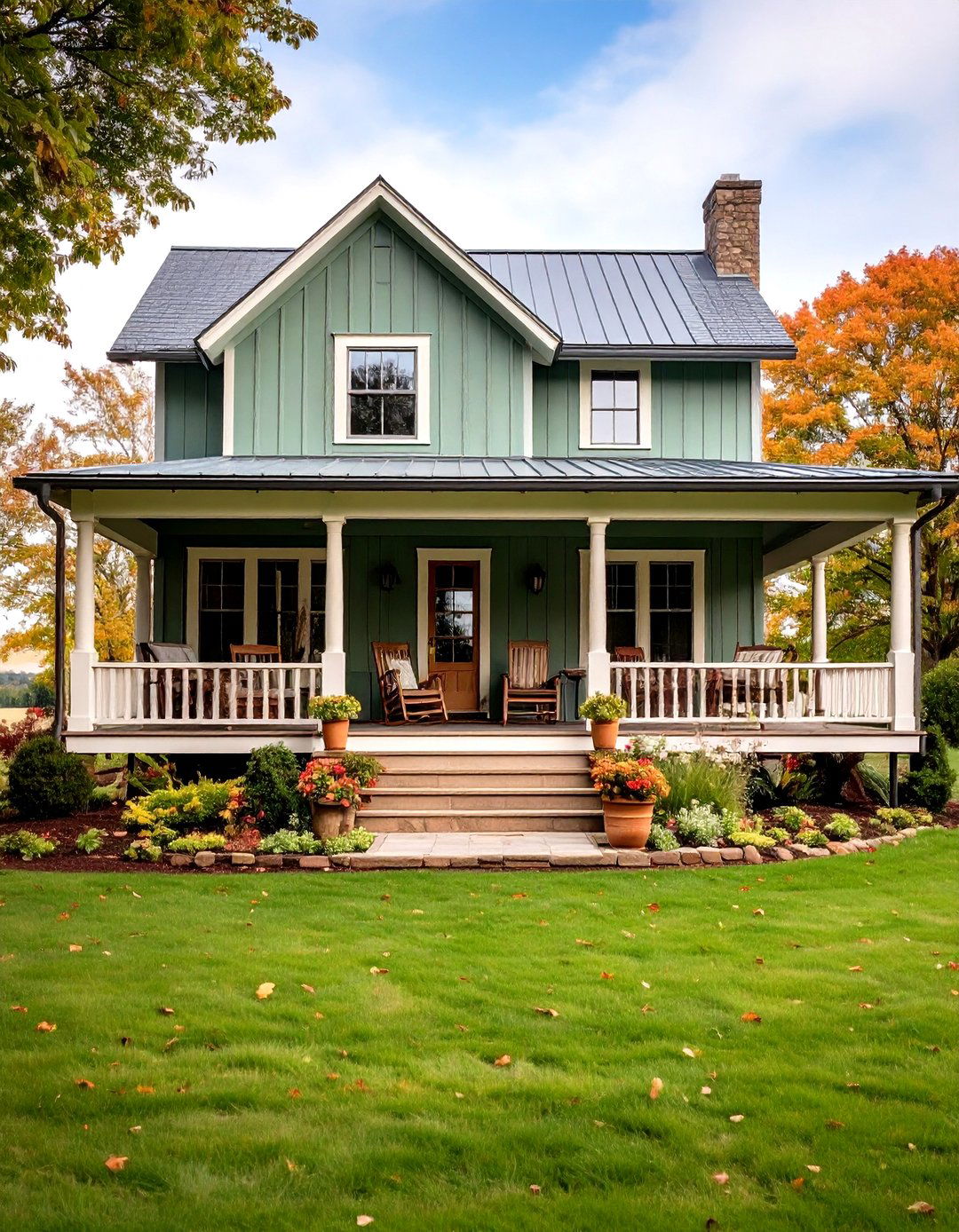
Farmhouse architecture gains rustic elegance through olive green siding paired with expansive wrap-around porches and traditional details. Olive is a great choice for home exteriors, too. It works especially well on rustic homes, like cabins, farmhouses, or modern-rustic dwellings. The natural neutral looks like it's pulled straight from the landscape around it. A house with a green exterior and an expansive front porch, furnished with rocking chairs and potted plants, inviting relaxation. White or cream-painted porch railings, columns, and trim create classic farmhouse appeal while maintaining the home's connection to agricultural roots. Metal roofing in complementary tones adds authenticity, while the olive green siding provides a sophisticated alternative to traditional white farmhouse exteriors. This combination works beautifully in rural or suburban settings where the home needs to feel both welcoming and substantial.
7. Colonial Olive Green House Exterior with Cream Trim
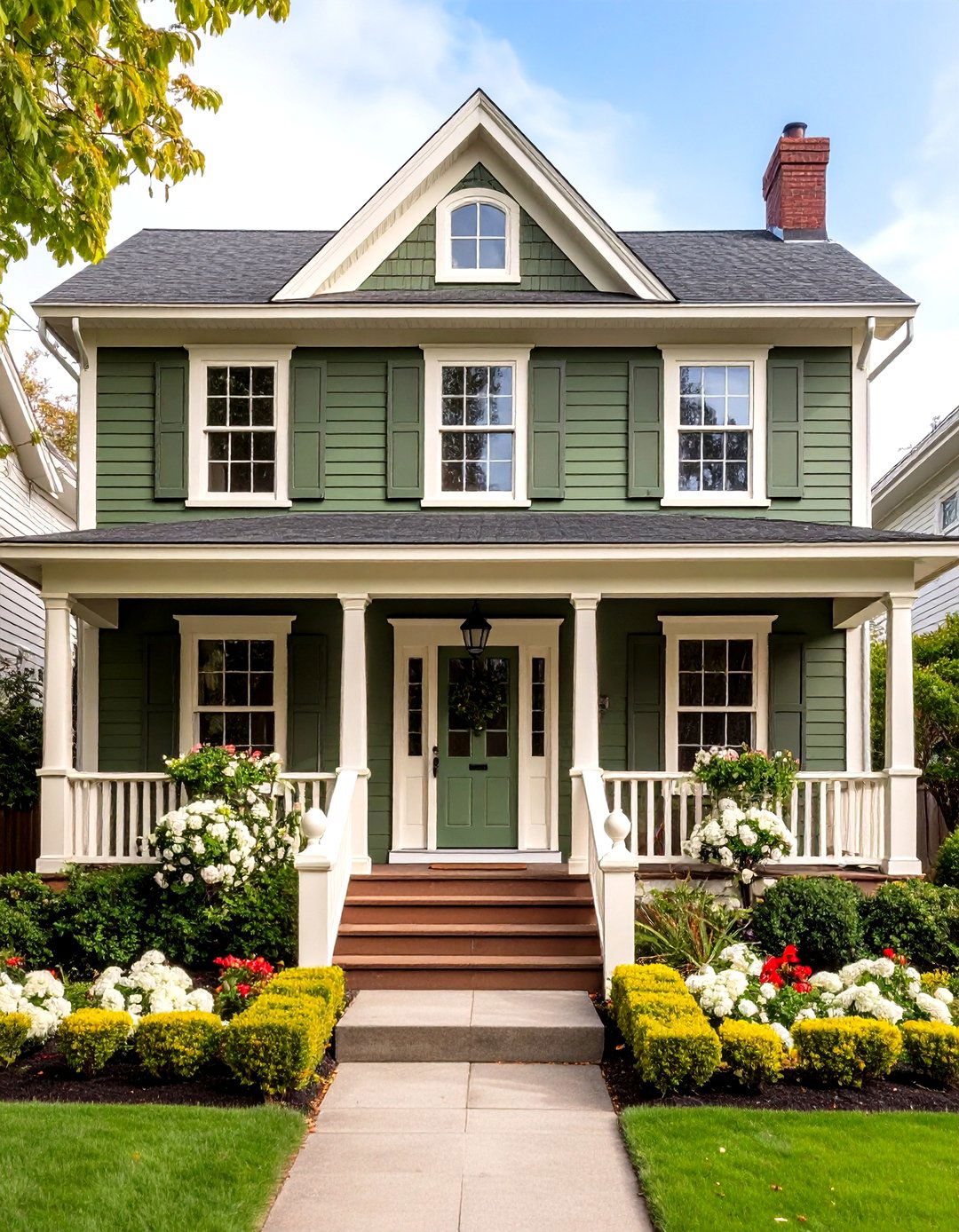
Colonial architecture finds fresh expression through olive green siding paired with warm cream trim that highlights the style's symmetrical proportions. This symmetrical colonial-style home showcases a deeper green shade with creamy white trim and a stately front entry. Off-white cream siding gives a warm and low-contrast backdrop for a soft, peach-colored front door and matching shutters. The cream trim softens the overall appearance while maintaining the formal elegance that defines colonial design. Window boxes, shutters, and front door details in cream create visual interest without overwhelming the facade's balanced proportions. This approach works particularly well on two-story colonials where the trim helps define floor levels and architectural features. The olive green provides sophistication while the cream elements ensure the home feels approachable and timeless rather than stark or imposing.
8. Olive Green House Exterior with Fiber Cement Lap Siding

Fiber cement lap siding in olive green offers durability, low maintenance, and authentic wood-like appearance without ongoing upkeep concerns. Recognized as a standard siding choice, classic lap looks great in dark olive green. The horizontal layout of this green siding works particularly well with the structured, symmetrical exterior design. Fiber cement siding offers many benefits that make it an attractive option for homeowners. One of the standout advantages of fiber cement siding is its exceptional durability. The horizontal lines of lap siding create clean, traditional appeal while the olive green color provides warmth and sophistication. By choosing a fiber cement option, you can ditch the maintenance and paint cans and get a beautiful olive green exterior that lasts. This material choice works across architectural styles and climates, offering homeowners peace of mind along with beautiful aesthetics that maintain their appearance for decades.
9. Tudor Style Olive Green House Exterior with Brick Accents
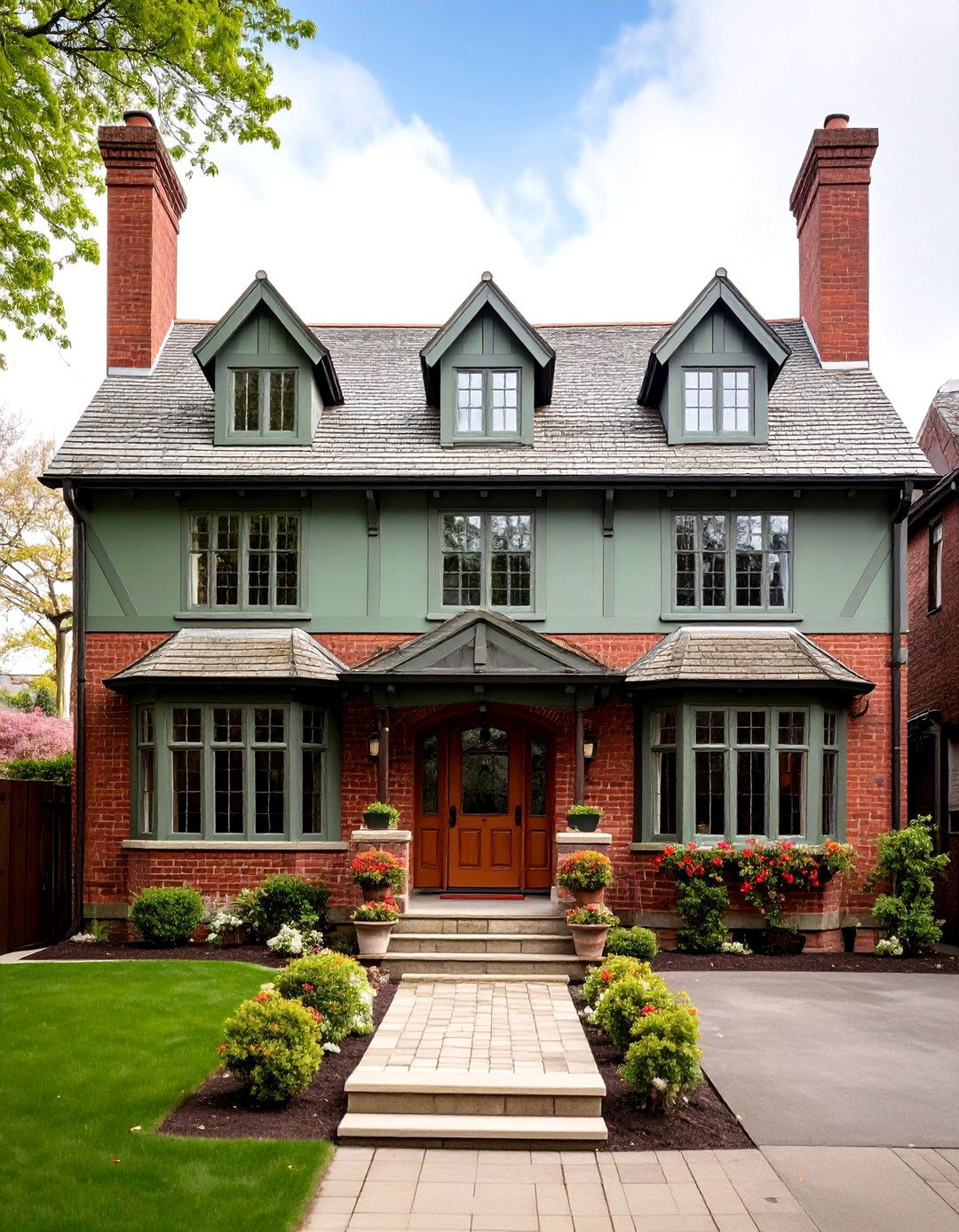
Tudor architecture gains contemporary relevance through olive green siding that contrasts beautifully with traditional brick and timber details. Tudor-style homes typically feature brown, white, and cream color palettes, so the dark olive green comes as a refreshing reinterpretation of what a Tudor home can look like with a modern twist. The vibrant red brick creates exceptional contrast with the dark olive green exterior, which results in outstanding curb appeal with a memorable look. This recognizable architectural style continues to be considered a classic, with today's homeowners bringing fresh ideas on how to bring it to life with unique colors and styles. The combination of olive green stucco or siding with exposed timber framing and brick chimneys creates visual richness while updating this classic style for contemporary tastes. This approach maintains the Tudor's distinctive character while offering a fresh alternative to traditional color schemes.
10. Contemporary Olive Green House Exterior with Steel Elements
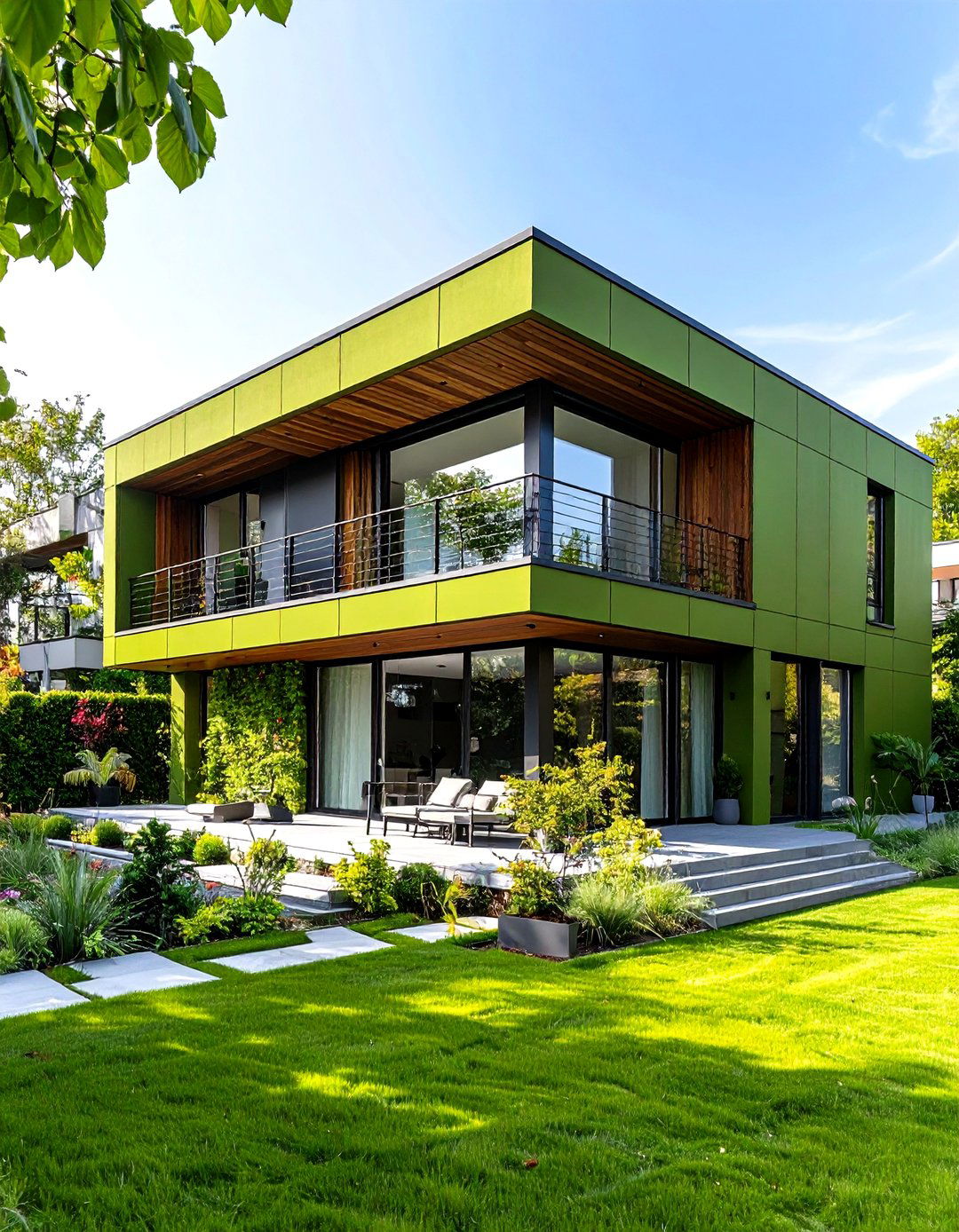
Contemporary architecture embraces olive green siding paired with steel beams, railings, and modern fixtures for sophisticated urban appeal. With striking geometry and sharp lines, this contemporary design resonates. Our designers painted the siding with Benjamin Moore's Aegean Olive, a deep shade that is so breathtaking. To add more layers to this dark olive green house, we mixed in natural building materials like stone and wood. The iron elements and modern lighting amplify the curb appeal with an industrial look. For an urban dwelling that exudes contemporary chicness, pair dark olive green with industrial-inspired elements. Think sleek metal railings, exposed brick, and oversized windows, all coming together to form a visually stunning and on-trend facade. Large windows, flat or low-pitched rooflines, and minimal ornamentation allow the olive green color to take center stage while steel accents provide contrast and modernity.
11. Olive Green House Exterior with Natural Stone Foundation

Natural stone foundations and accents create beautiful textural contrast against olive green siding while connecting homes to their natural surroundings. Olive green siding meshes beautifully with natural elements like stone and wood. The gray-green color has some powerful khaki undertones that are only enhanced by all of the natural materials our designers incorporated into this design. With textured stone accents seamlessly integrated into an olive green exterior, warmth and character emerge naturally. Stone foundations, chimney surrounds, or accent walls in natural fieldstone or cut stone complement the earthy qualities of olive green while adding substantial visual weight to the home's base. This combination works particularly well on sloped lots where stone retaining walls or terraced landscaping can be integrated into the overall design, creating seamless transitions between built and natural environments.
12. Rustic Olive Green House Exterior with Log Cabin Features
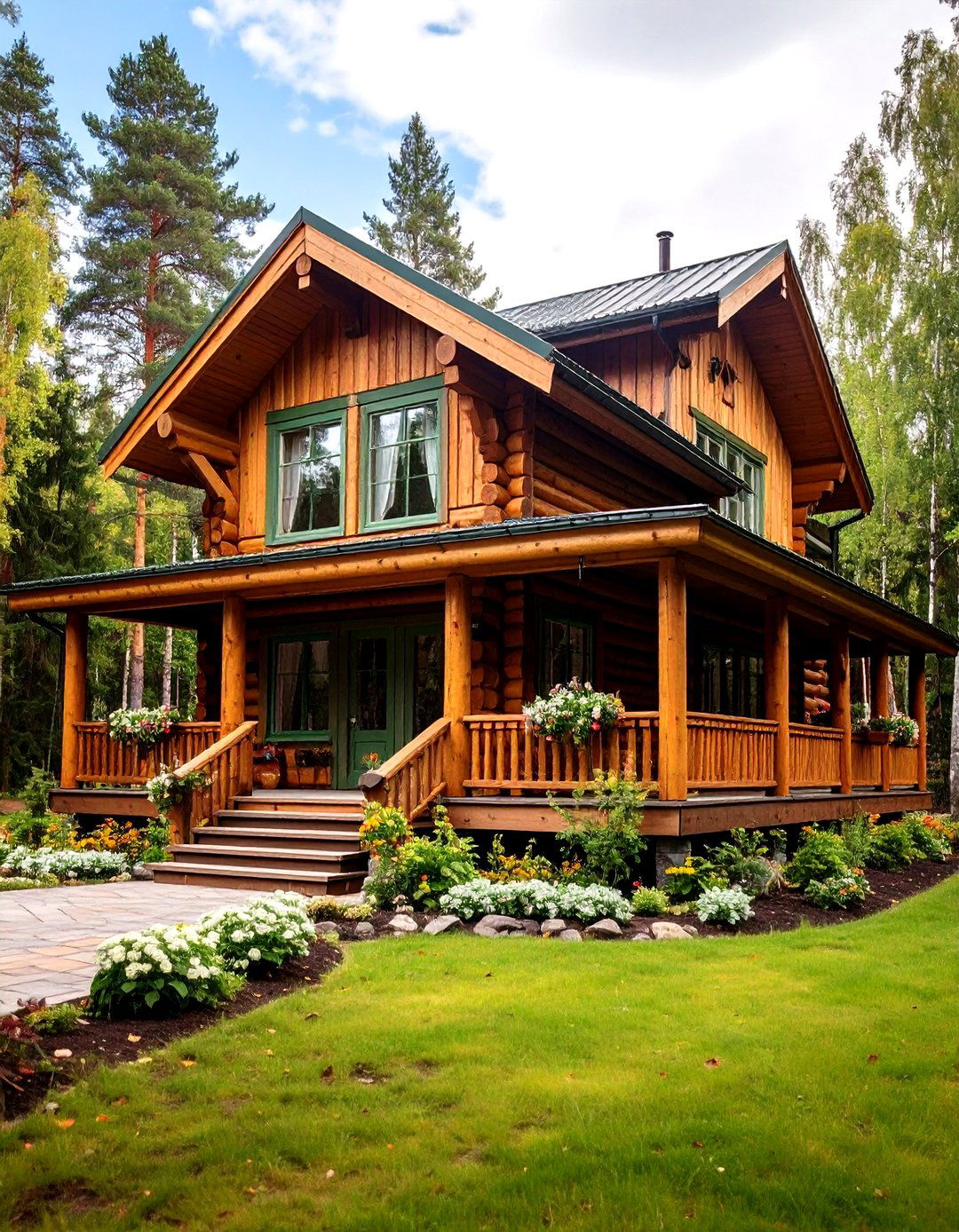
Log cabin and rustic architecture gain sophistication through olive green staining or siding that enhances natural wood textures and grain patterns. A rustic log cabin with dark green painted logs, blending seamlessly into the forested environment. For a rustic getaway vibe, consider integrating wooden log accents alongside the dark olive green exterior. This fusion of natural elements adds charm and character to your home, evoking the ambiance of a cozy cabin nestled in the woods. Dark olive green siding is also a fantastic choice for rustic homes and cabin-style exteriors that draw on natural elements. Whether applied to full log construction or log accent details on conventional framing, olive green staining brings out wood grain while providing weather protection. This approach works beautifully in wooded settings where the home needs to blend with surrounding trees while maintaining its distinctive character and rustic charm.
13. Mid-Century Modern Olive Green House Exterior with Large Windows

Mid-century modern design principles find perfect expression through olive green siding paired with expansive windows and clean horizontal lines. A mid-century modern home with green exterior, large glass panels, and minimalist design elements, reflecting retro charm. Wide sliding glass patio door styles are trending as people prioritize creating seamless indoor-outdoor living. A patio door offers a tranquil transition from homey interiors into calm and natural surroundings. The olive green serves as a sophisticated backdrop for floor-to-ceiling windows and sliding glass doors that define this architectural style. Flat or shed rooflines, minimal trim details, and integration with outdoor living spaces allow the color to create warmth without competing with the style's emphasis on simplicity and connection to nature. This combination works particularly well in suburban settings where the home needs to feel both distinctive and harmonious with landscaping.
14. Olive Green House Exterior with Copper Gutters and Fixtures

Copper gutters, downspouts, and light fixtures create elegant accents against olive green siding while developing beautiful patina over time. A house with green siding and copper gutters, downspouts, and lighting fixtures, adding a touch of luxury and elegance. This dark olive green house fully embraces earth tones. From the walkway pavers and wood shutters to the copper gutters and wood porch columns, it's all working together. The warm tones of copper complement the earthy qualities of olive green while providing functional benefits through superior weather resistance and longevity. As copper ages and develops its characteristic green patina, it creates subtle color coordination with the olive siding while maintaining its distinctive metallic character. This combination works particularly well on traditional and transitional architectural styles where the copper details can highlight rooflines, porches, and entryways while adding substantial value and visual interest.
15. Victorian Olive Green House Exterior with Ornate Details
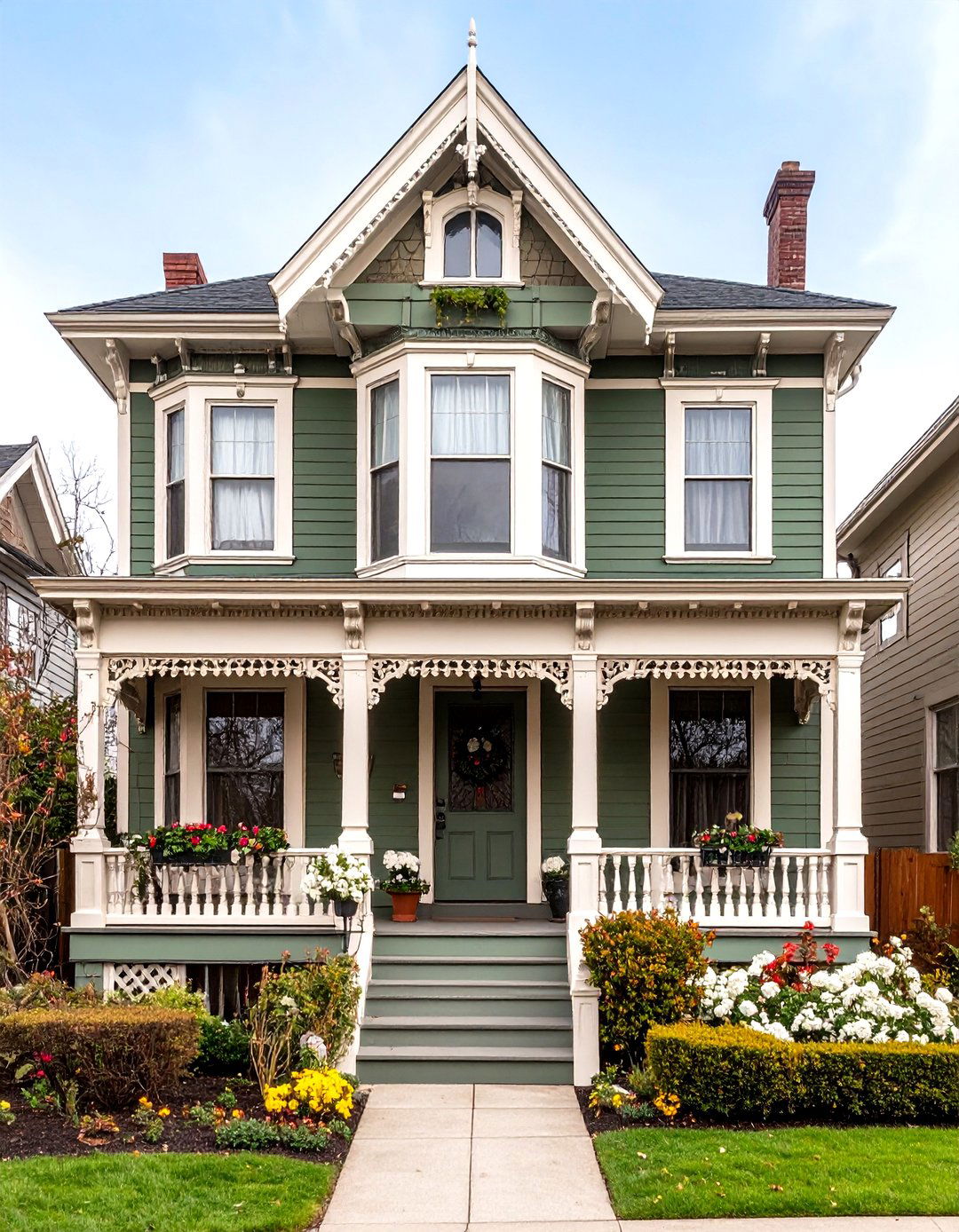
Victorian architecture embraces olive green as a sophisticated alternative to traditional color schemes while highlighting ornate trim and decorative elements. A Victorian-style house with intricate trim painted in varying shades of green, highlighting the elaborate architecture. This historic home and coach house in a landmark district on Astor Street was built in the late 1800's. The new owners purchased the property with a vision to convert the building back to single family residence. This historic Victorian does color right. Three shades of green—with olive on the main-level siding, celery on the upper-level siding, and ivy accents on trim, windows, and gables—produce an easy-going, yet multifaceted backdrop for bolder terra-cotta accents and cream architectural details. The rich olive green provides a sophisticated foundation for gingerbread trim, bay windows, and decorative brackets while maintaining the style's characteristic exuberance. Cream or white trim details ensure architectural features remain prominent while the olive green creates depth and visual interest across the home's elaborate facade.
16. Olive Green House Exterior with Sage Green Secondary Color
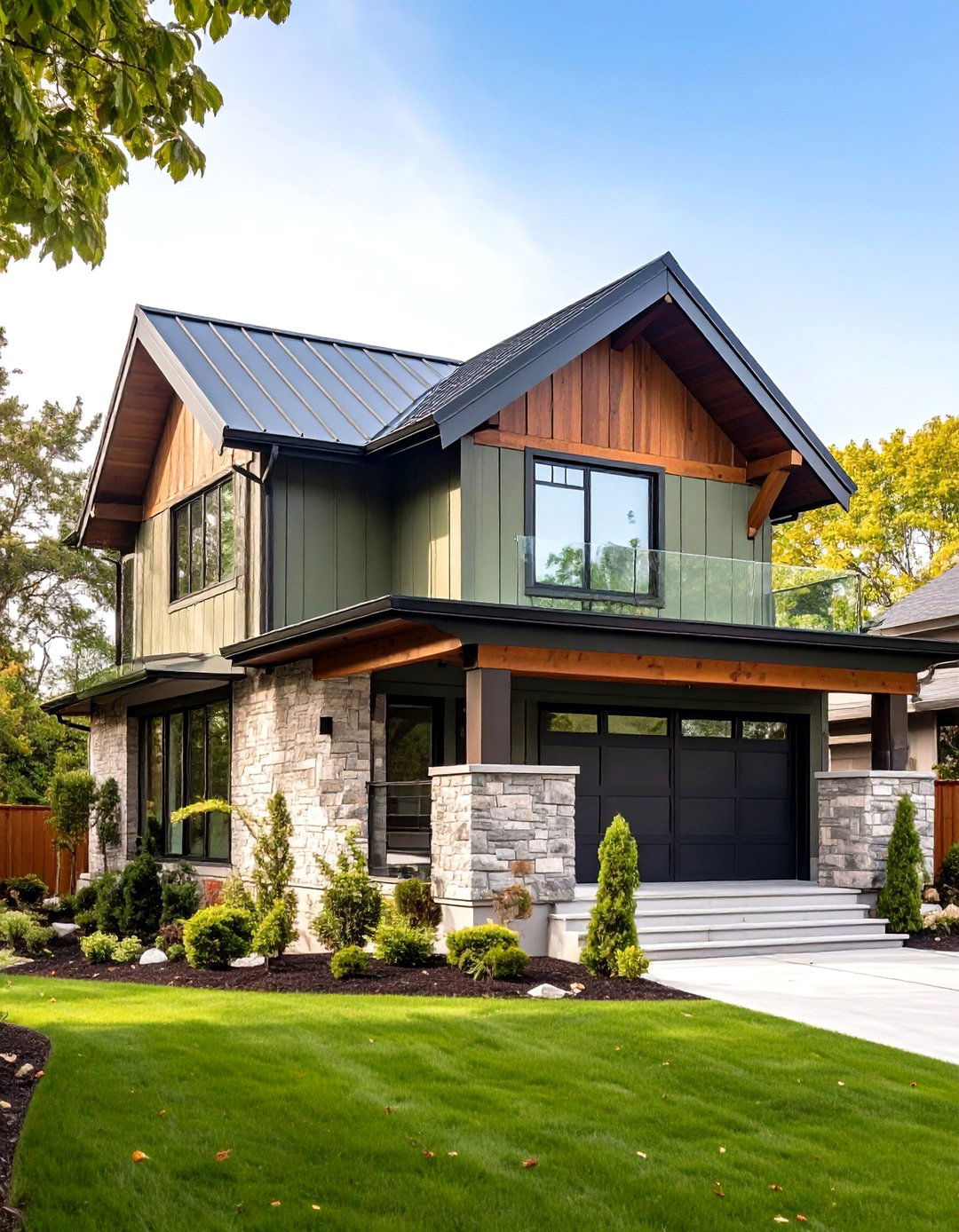
Monochromatic green schemes using olive as the primary color with sage green accents create sophisticated, nature-inspired exteriors with subtle depth. James Hardie paneling in Summer Sage is stunning on this home. The earth tone does a fantastic job of softening the house's hard angles and helps it blend into the trees. Three shades of green—with olive on the main-level siding, celery on the upper-level siding, and ivy accents on trim, windows, and gables—produce an easy-going, yet multifaceted backdrop. This approach works particularly well on homes with varied architectural planes, dormers, or additions where different green tones can define separate elements while maintaining overall cohesion. The lighter sage green can highlight upper levels, shutters, or accent walls while the deeper olive provides grounding and substance. This combination creates visual interest without introducing contrasting colors, perfect for homeowners who want sophisticated monochromatic appeal.
17. Coastal Olive Green House Exterior with Weathered Accents
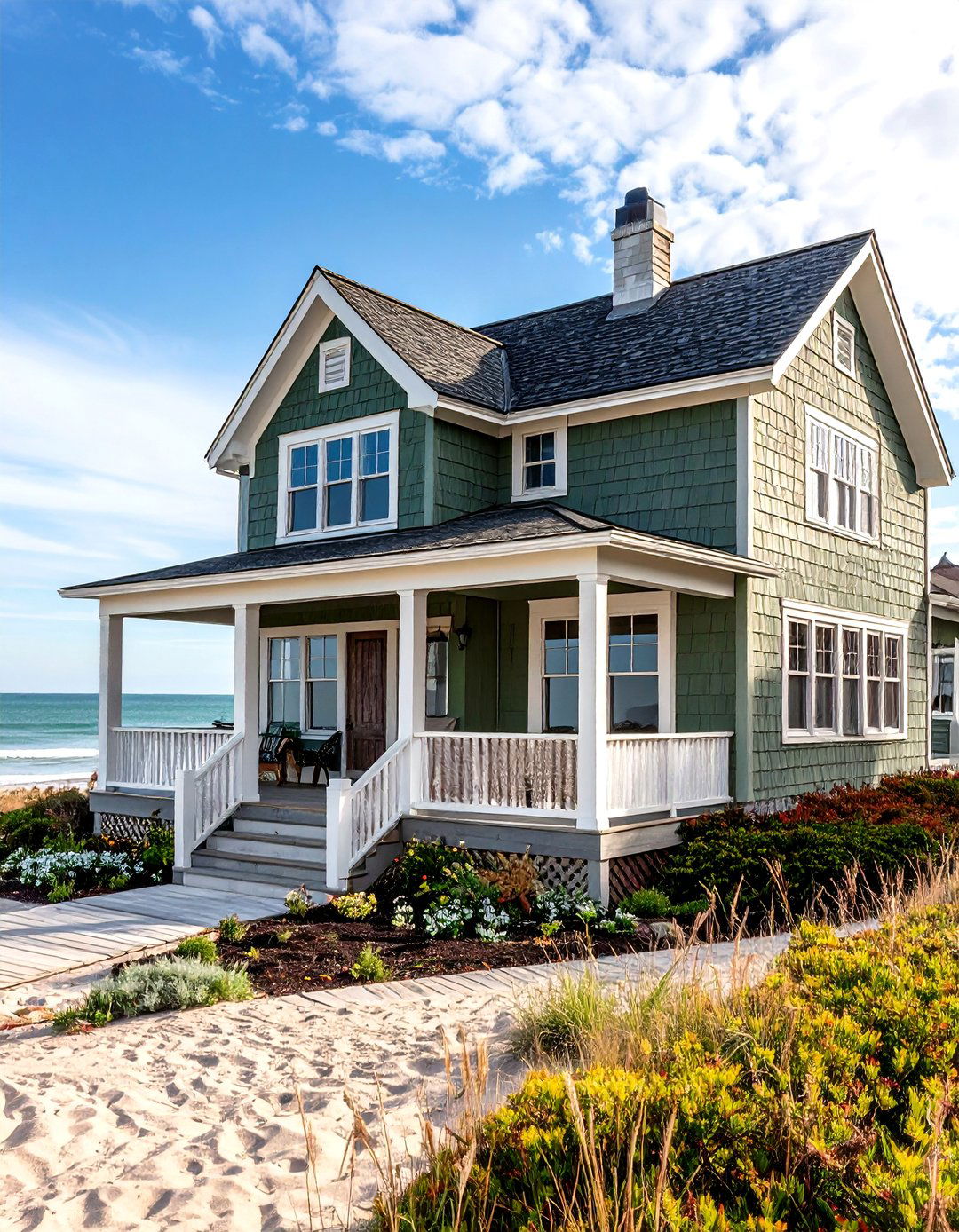
Coastal design principles embrace olive green siding paired with weathered wood accents and nautical details for relaxed seaside appeal. Transport yourself to the serene coastal lifestyle by pairing dark olive green with crisp white accents. This combination exudes a fresh and inviting aura, reminiscent of beachside cottages. Picture white window frames, trimmings, and railings against the deep green backdrop. Create a maritime-inspired exterior by combining dark olive green with nautical elements. Imagine rope details, anchor motifs, and weathered wood textures, all contributing to a charming coastal vibe that's both inviting and captivating. Weathered cedar shingles, driftwood-inspired trim, and white or cream accents complete this look that feels both sophisticated and relaxed. This combination works beautifully near water where salt air and weather create natural aging, but can be adapted for inland homes seeking coastal-inspired charm.
18. Olive Green House Exterior with Dark Charcoal Roof
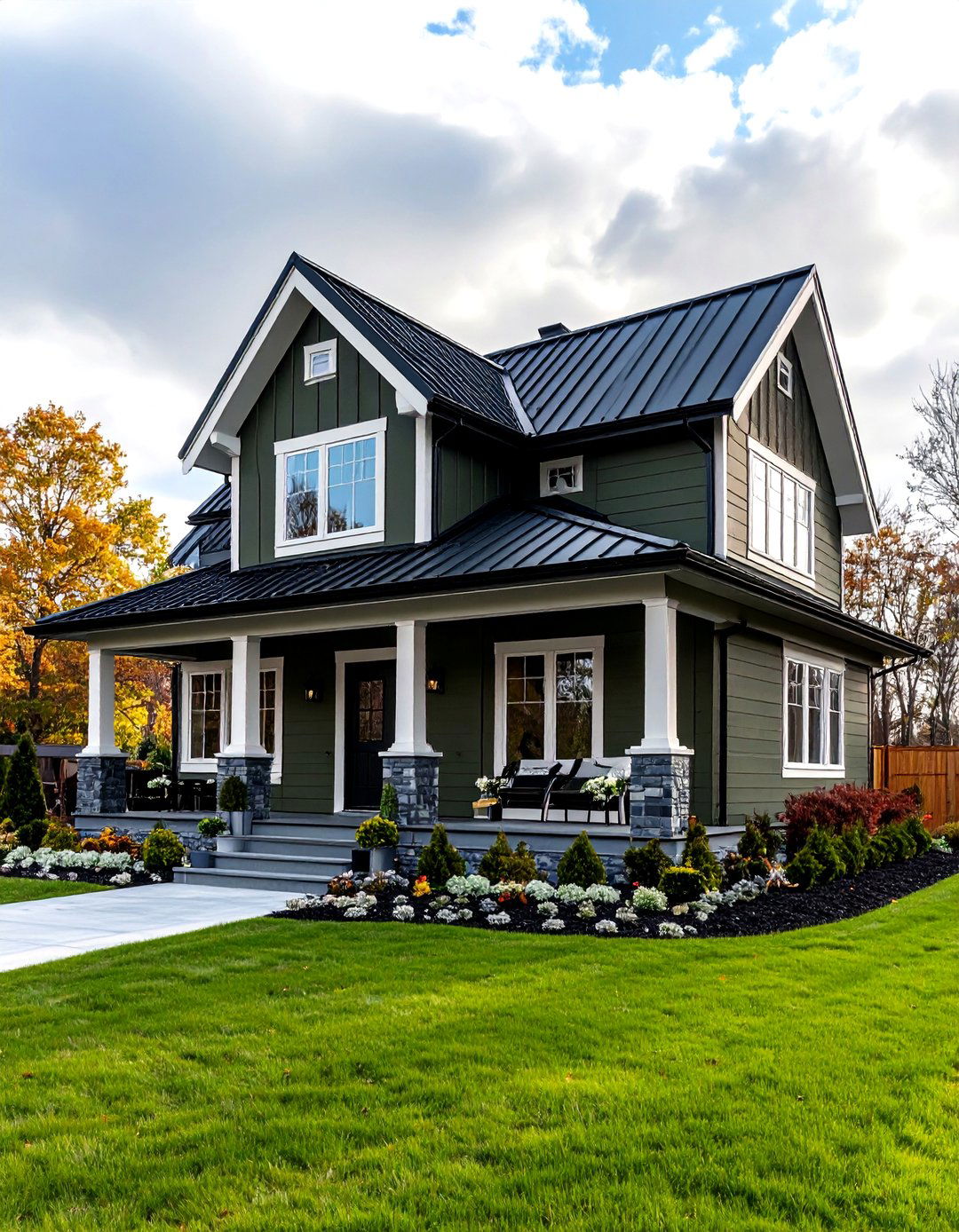
Dark charcoal or black roofing creates dramatic contrast against olive green siding while providing a sophisticated foundation for the overall color scheme. Smooth lap looks great on multi-level homes, and the dark olive green color brings a soothing consistency throughout. Notice how the white trim helps to divide the levels and draw attention to the windows, while the dark gray roofing expresses a tone that's very close to the dark olive green siding. The Revere Pewter trim adds a nice, bright pop while black accents — like the roof, windows, shutters, and gutters — offset the earthy green tone. The dark roof grounds the home's appearance while allowing olive green walls to feel lighter and more vibrant by comparison. This combination works across architectural styles, from modern to traditional, creating substantial visual weight at the roofline while maintaining warmth through the green siding. Metal roofing in charcoal or slate enhances this effect while providing longevity and weather resistance.
19. Prairie Style Olive Green House Exterior with Horizontal Lines
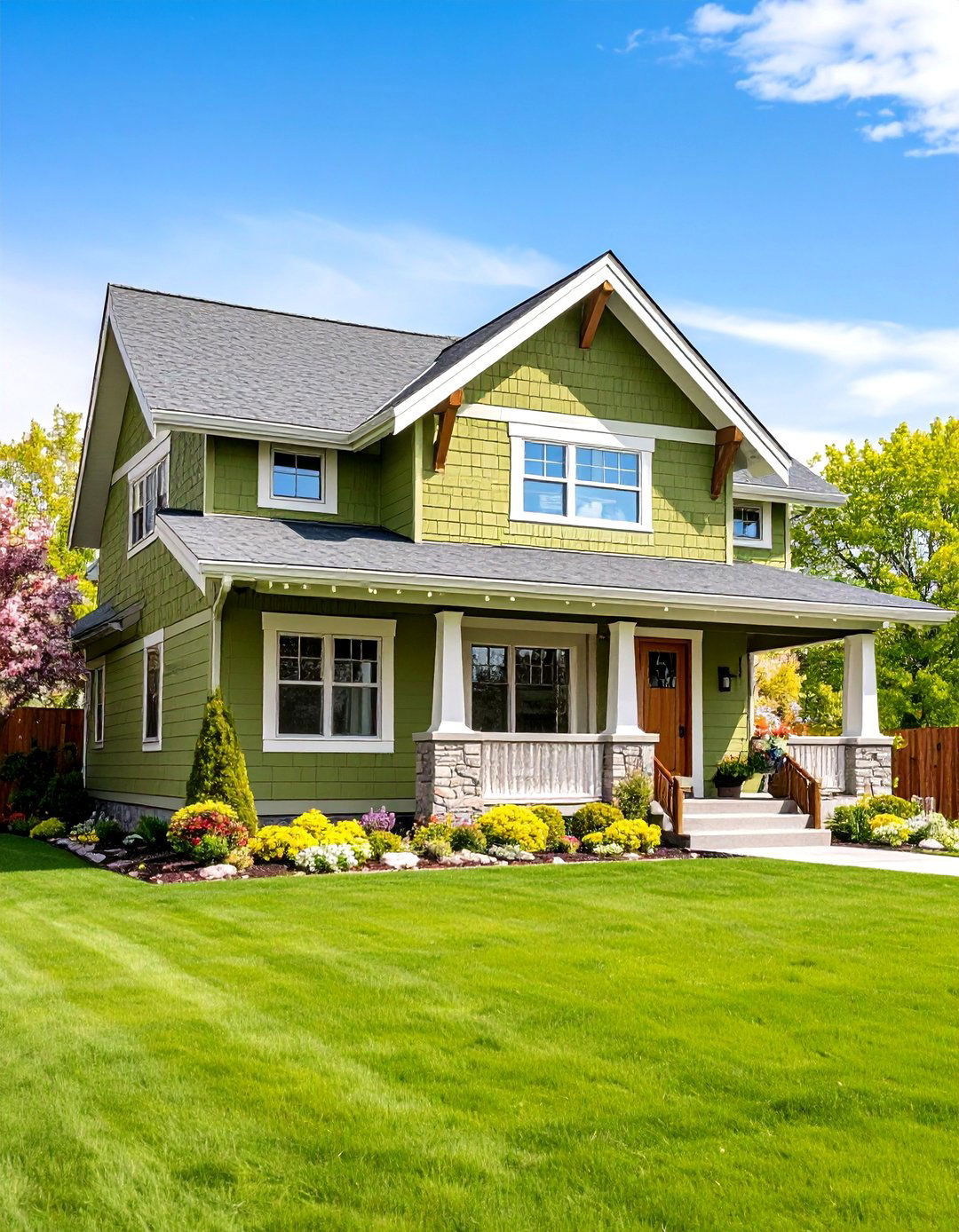
Prairie architecture finds natural expression through olive green siding that emphasizes the style's characteristic horizontal lines and connection to landscape. Frank Lloyd Wright is largely credited with being the father of prairie-style architecture in the United States. Prairie-style architecture grew from the craftsman movement and found inspiration from the flat landscapes of the Midwest. The olive green color complements the style's emphasis on natural materials and earth tones while horizontal siding, trim bands, and window arrangements reinforce the architectural philosophy. Low-pitched rooflines, wide overhangs, and geometric window patterns work beautifully with olive green siding that feels connected to prairie grasses and natural vegetation. This combination creates homes that appear to grow from their sites while maintaining the clean, unornamented lines that define prairie design. The olive green provides warmth and sophistication while supporting the style's integration with surrounding landscapes.
20. Olive Green House Exterior with Integrated Landscape Design

Comprehensive landscape design integration allows olive green house exteriors to blend seamlessly with carefully planned plantings and hardscape elements. Natural landscaping harmony integrates olive green house exteriors with lush, organic surroundings to create a cohesive outdoor sanctuary. This idea highlights the synergy between the home's facade and verdant gardens, where carefully chosen plants emphasize the olive's calming vibe. Choose plants that complement the shade, layering diverse green textures to achieve a balanced outdoor space that resonates with the color palette. Landscaping with olive trees is a good choice if you're looking for new deck or patio ideas. They will grow in a neat, compact shape so don't take up too much room. Strategic plantings of olive trees, sage, lavender, and ornamental grasses create natural color coordination while stone pathways, retaining walls, and outdoor living spaces extend the home's sophisticated palette into the landscape, creating unified indoor-outdoor living environments.
Conclusion:
Olive green house exteriors offer homeowners an sophisticated alternative to traditional color schemes while providing remarkable versatility across architectural styles and design preferences. This curated collection of ideas provides a range of inspiring approaches to balance tradition with modern design elements. From contemporary statements with steel accents to rustic farmhouse charm with natural materials, olive green adapts beautifully to diverse aesthetic goals. Versatility and maturity are two clear strengths of dark olive green house siding. Whether paired with crisp white trim for classic appeal or combined with natural stone and copper details for earthy sophistication, this timeless color creates memorable curb appeal that connects homes to their natural surroundings while maintaining distinctive character and enduring value.


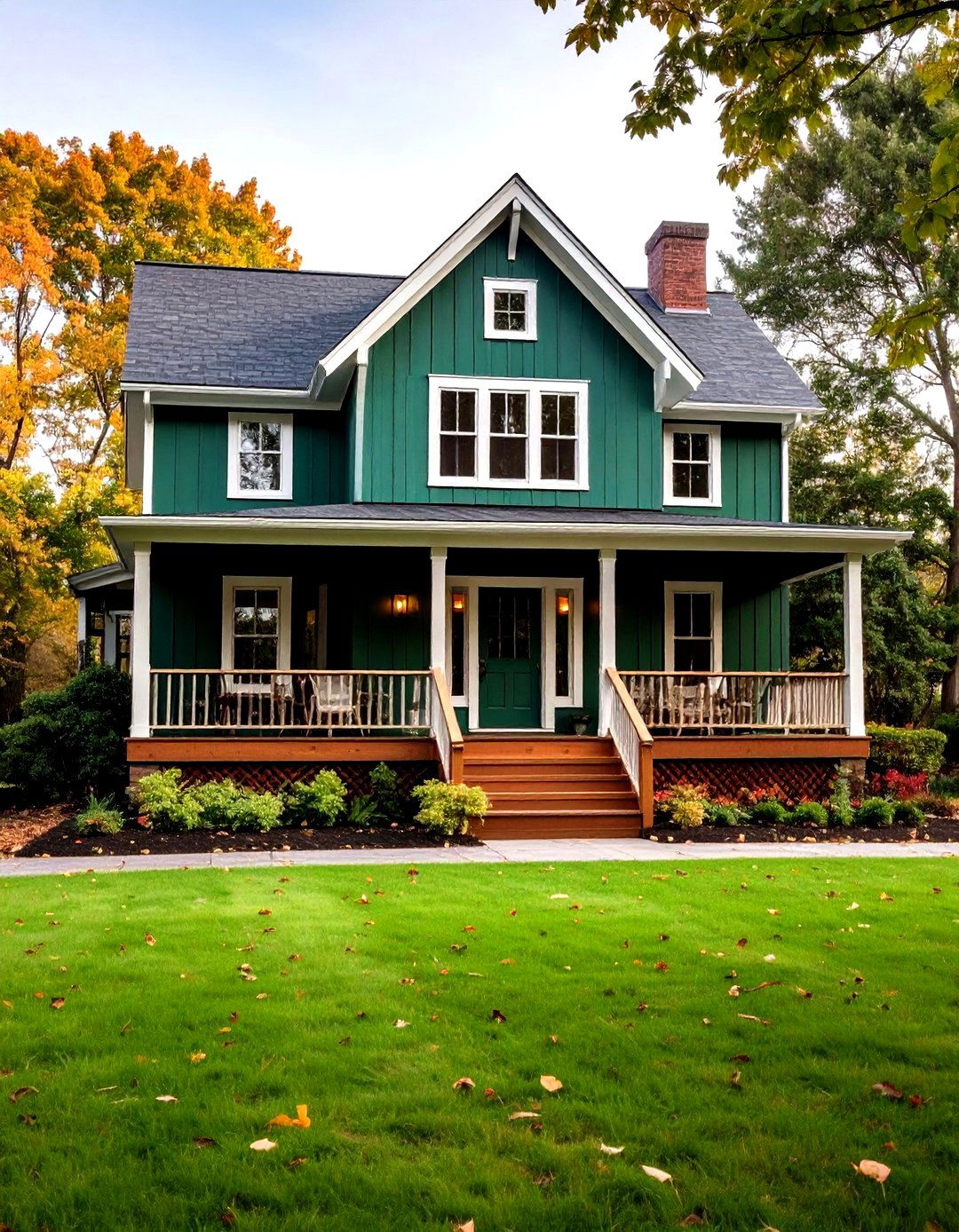
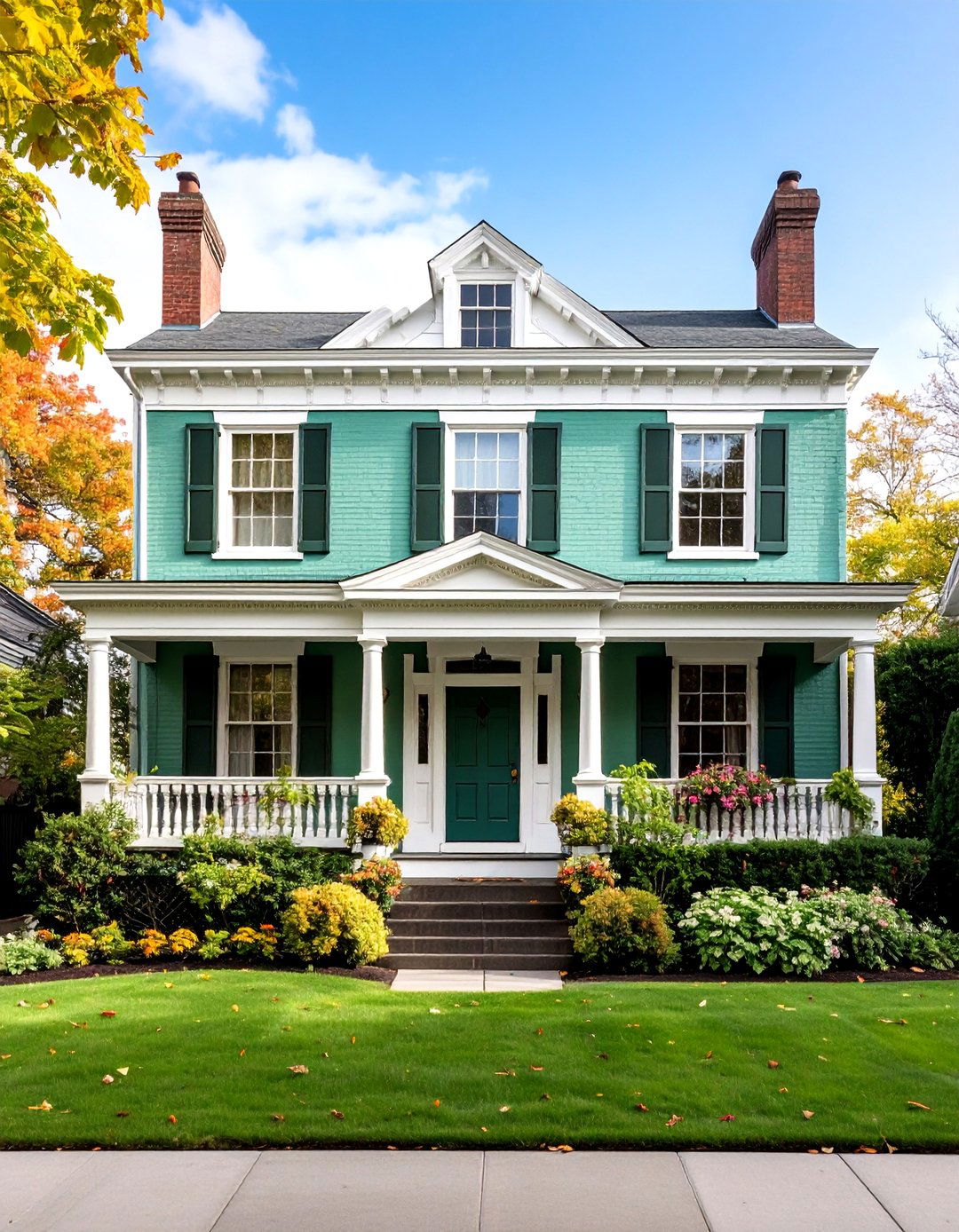
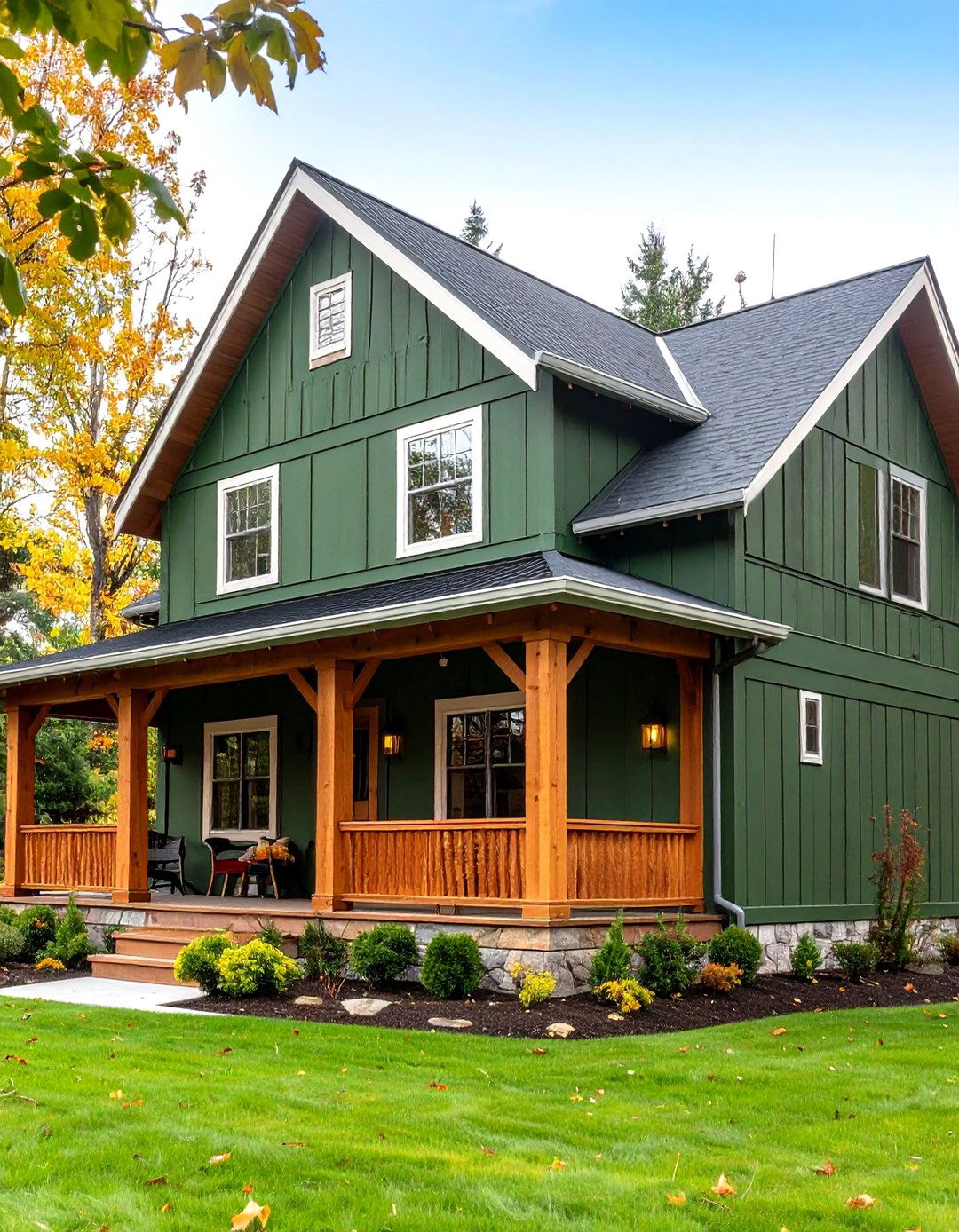


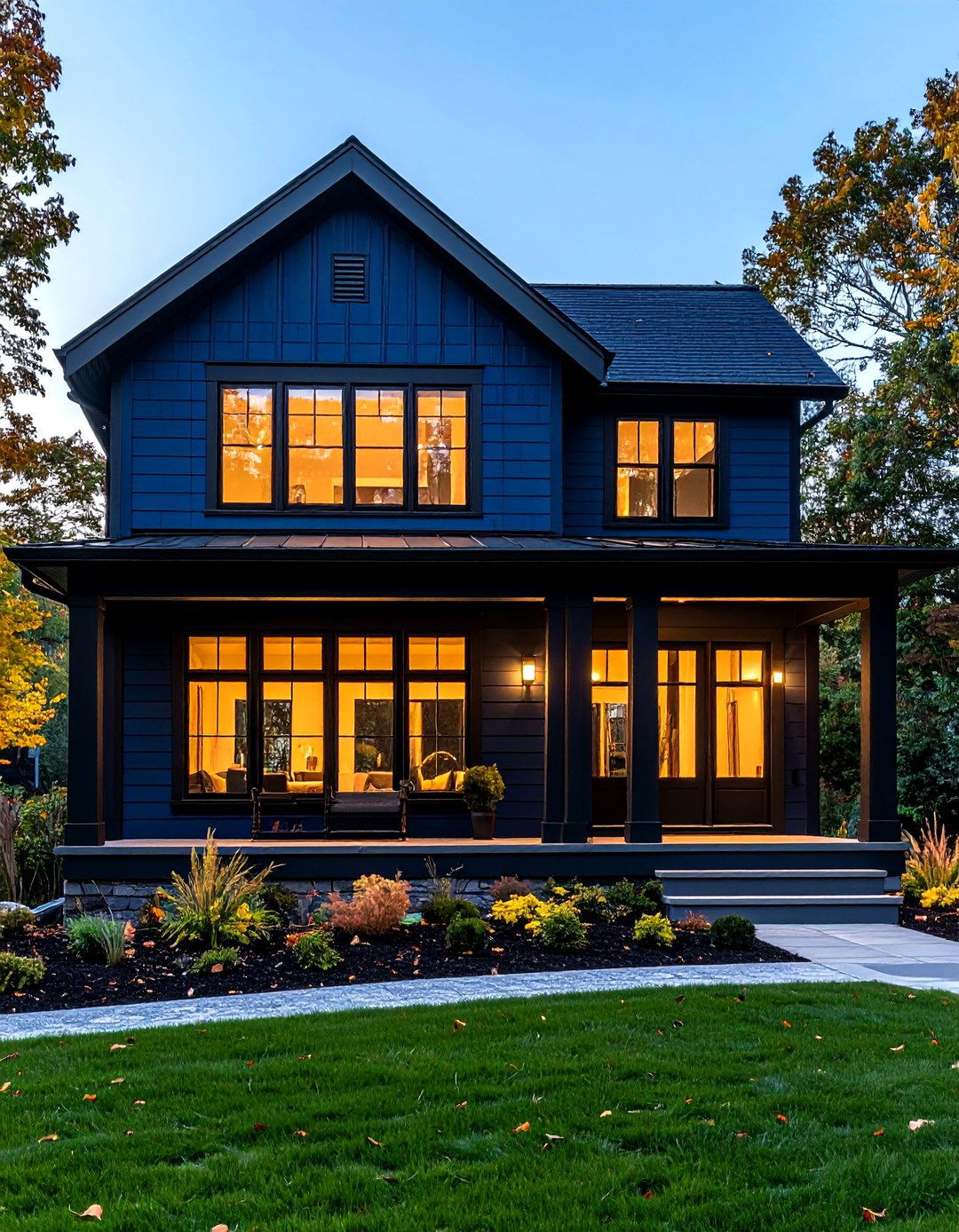
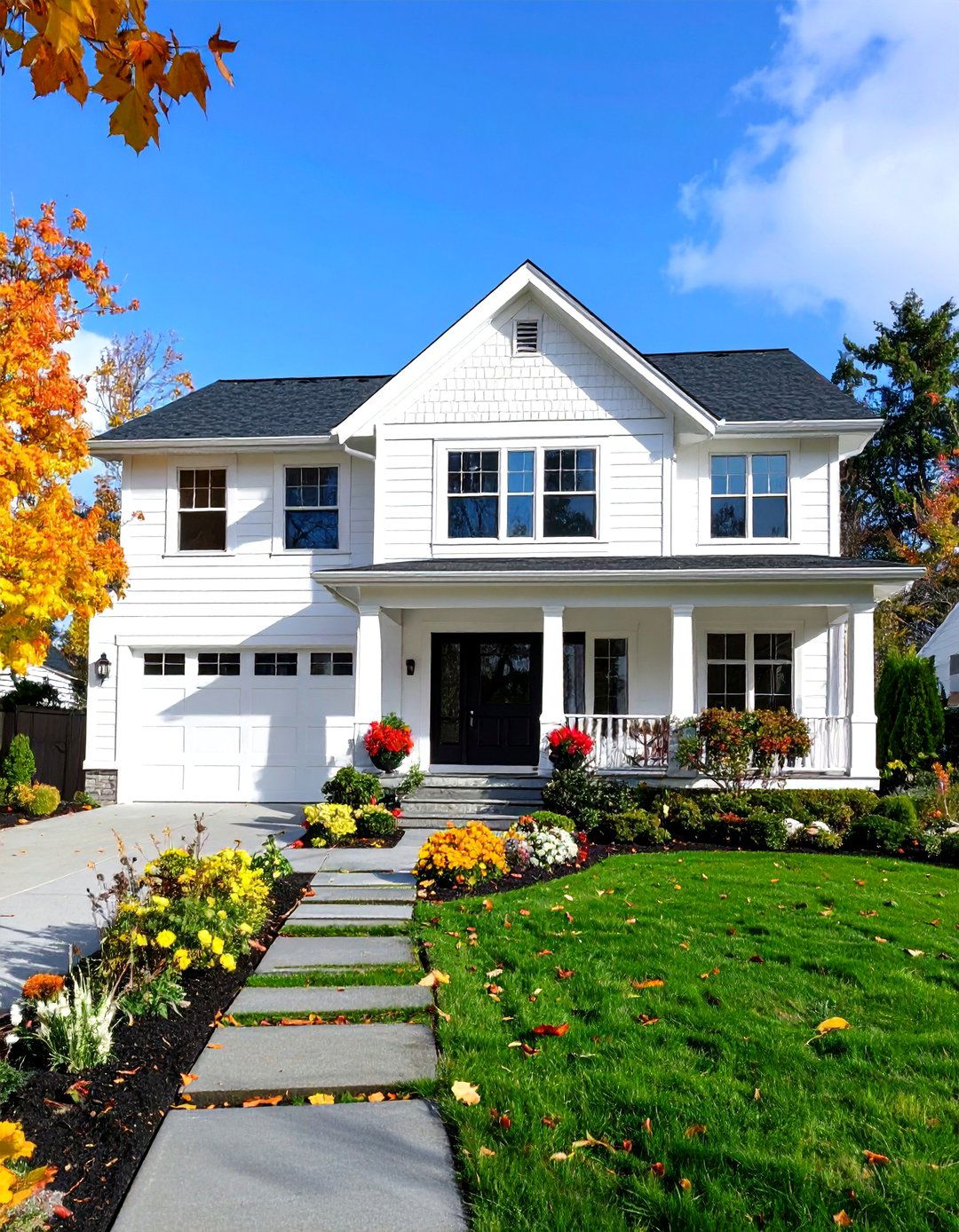
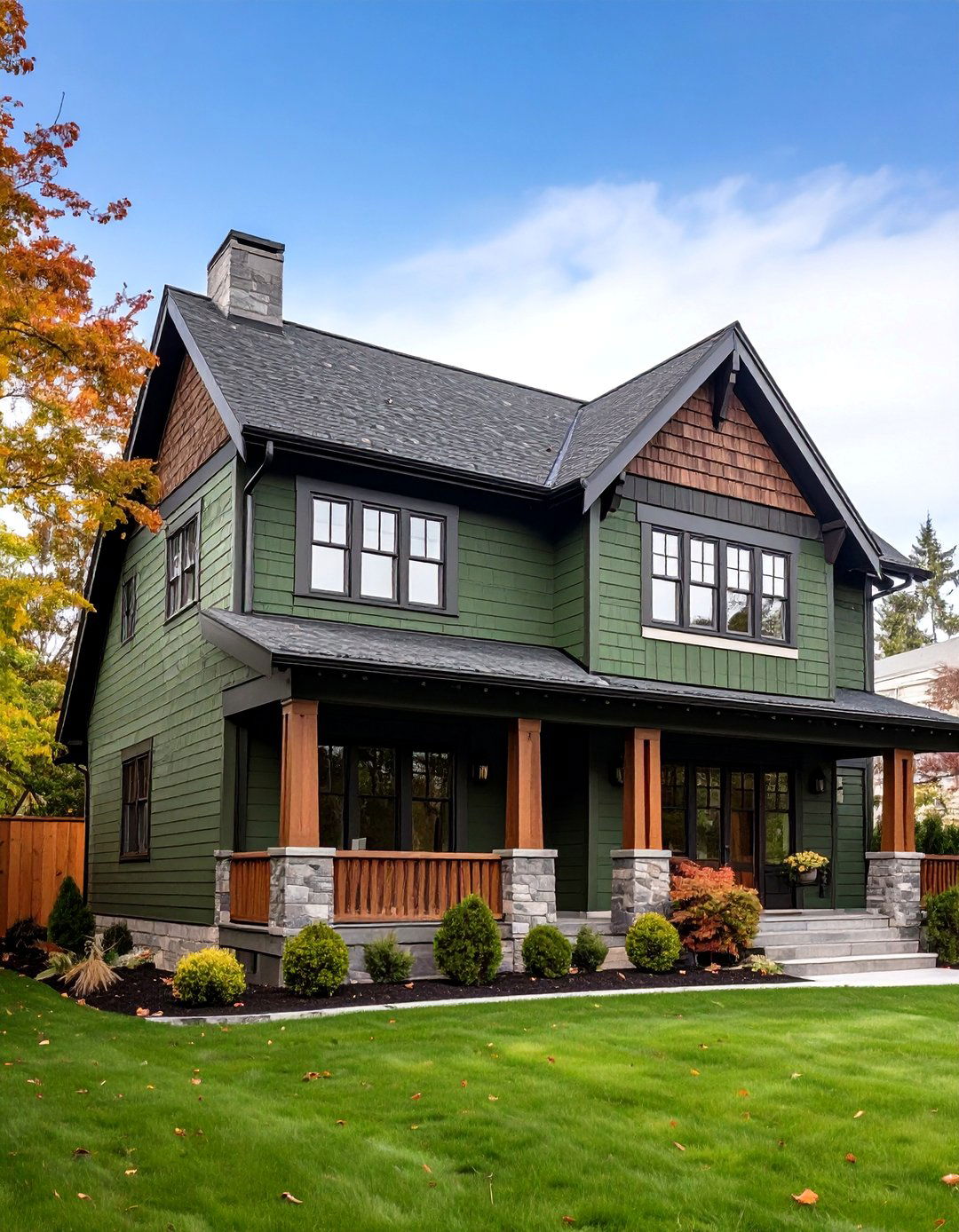
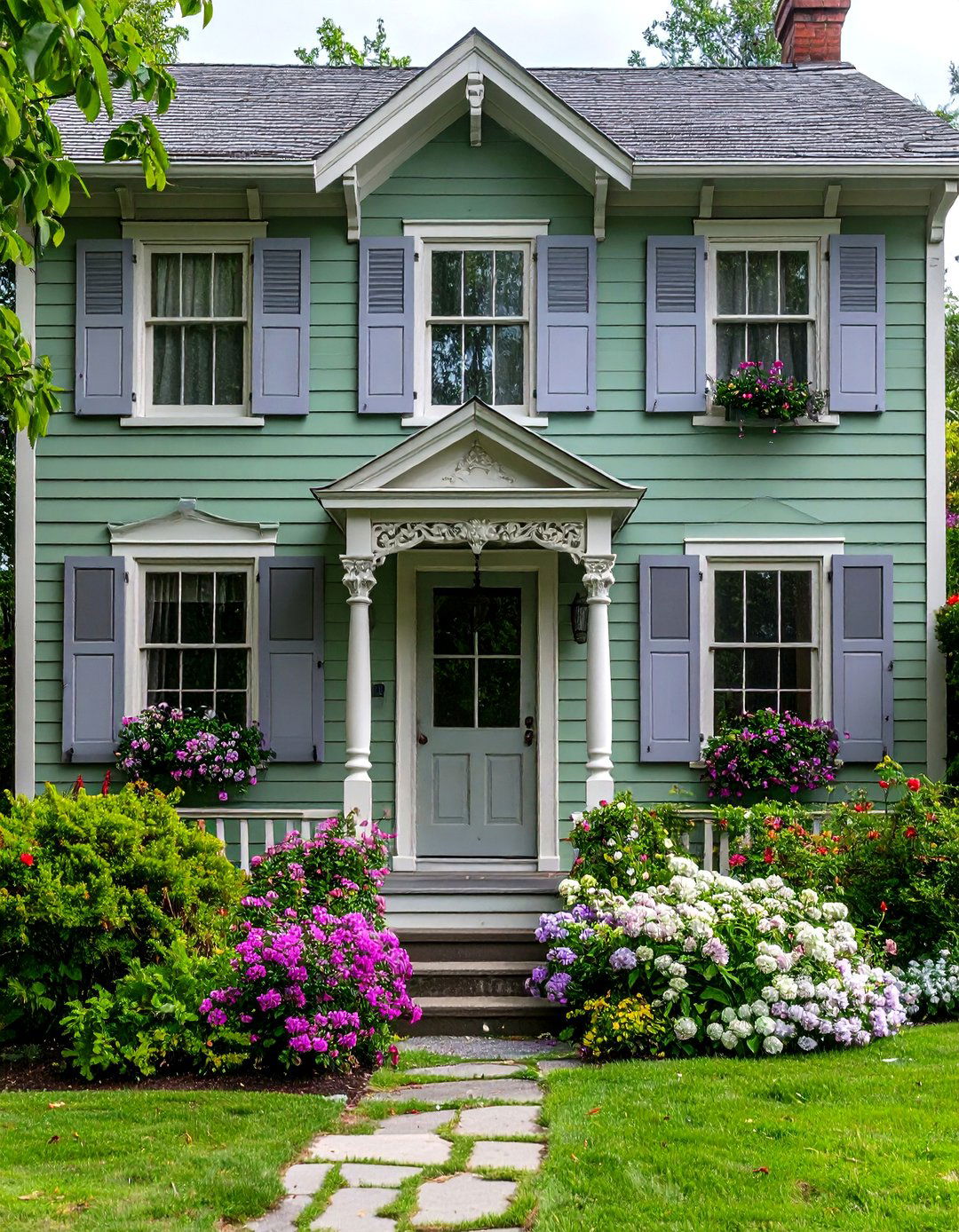
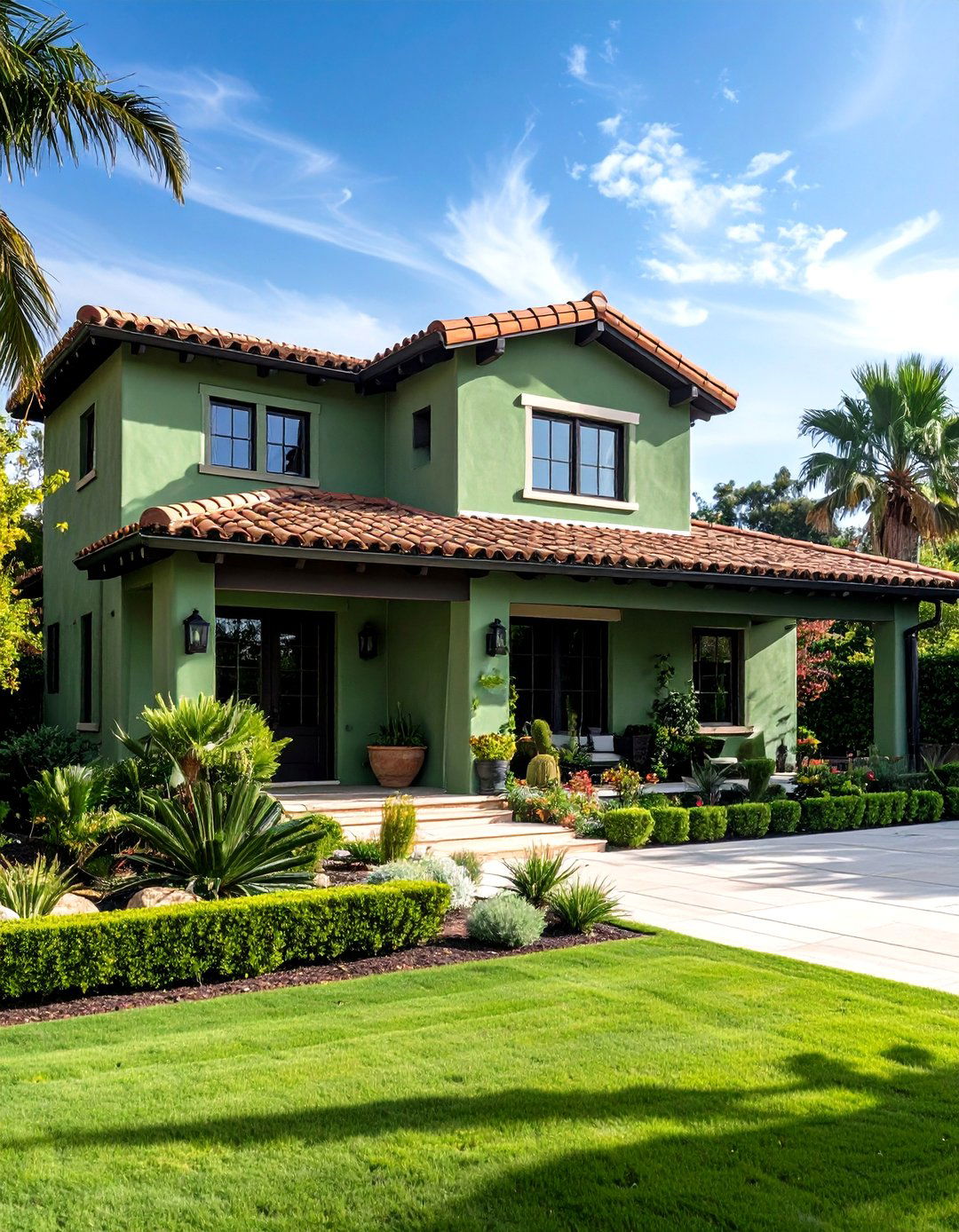
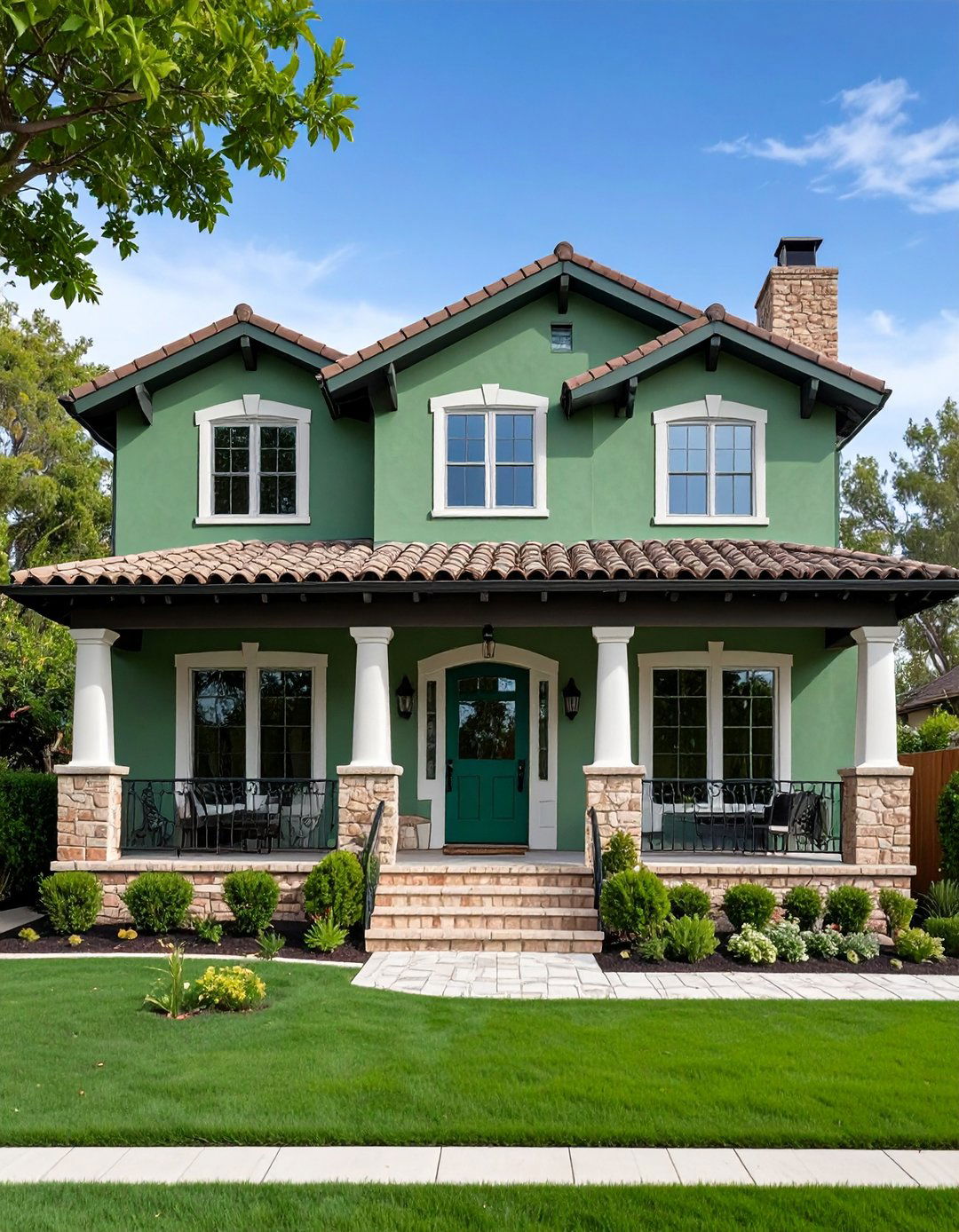
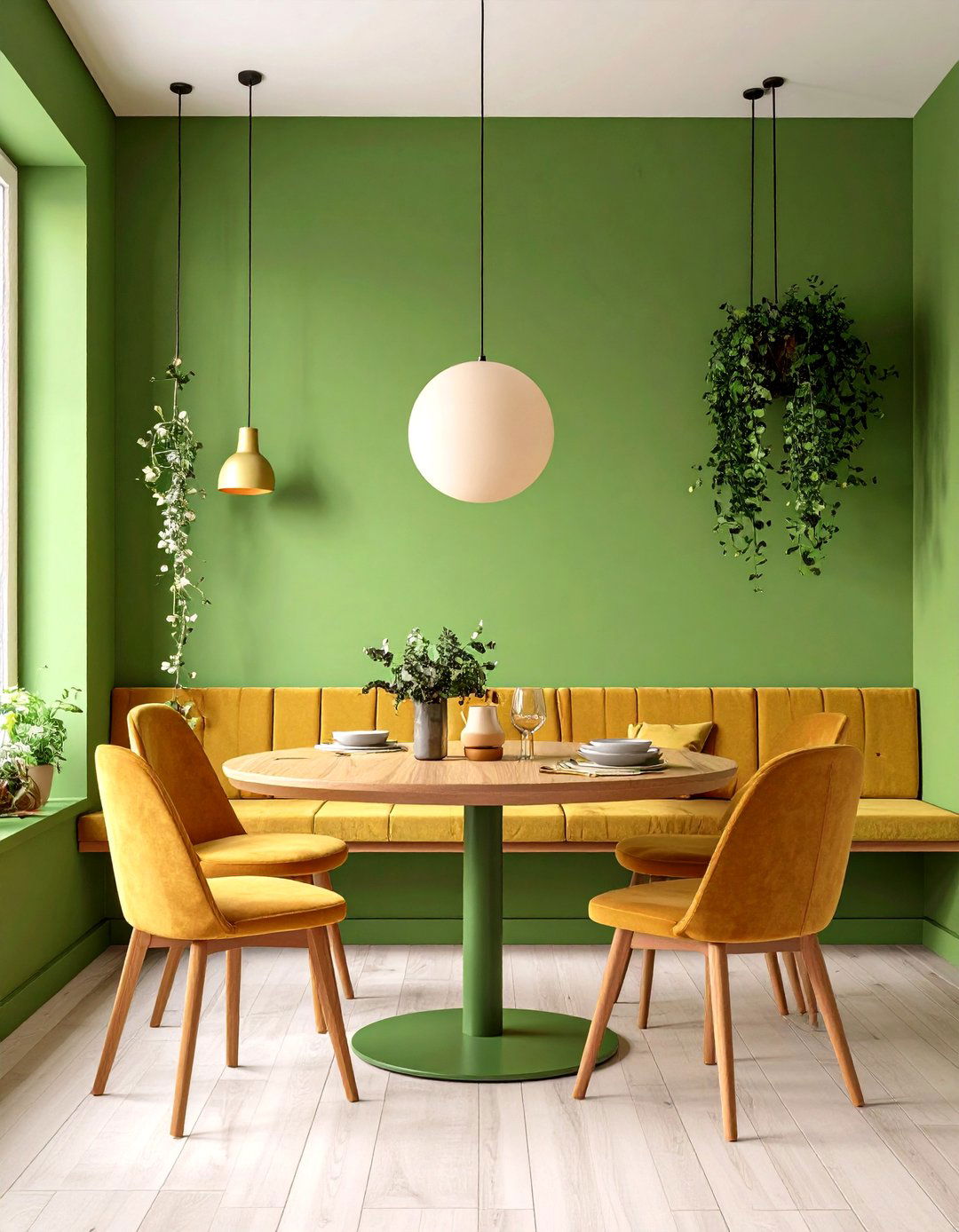
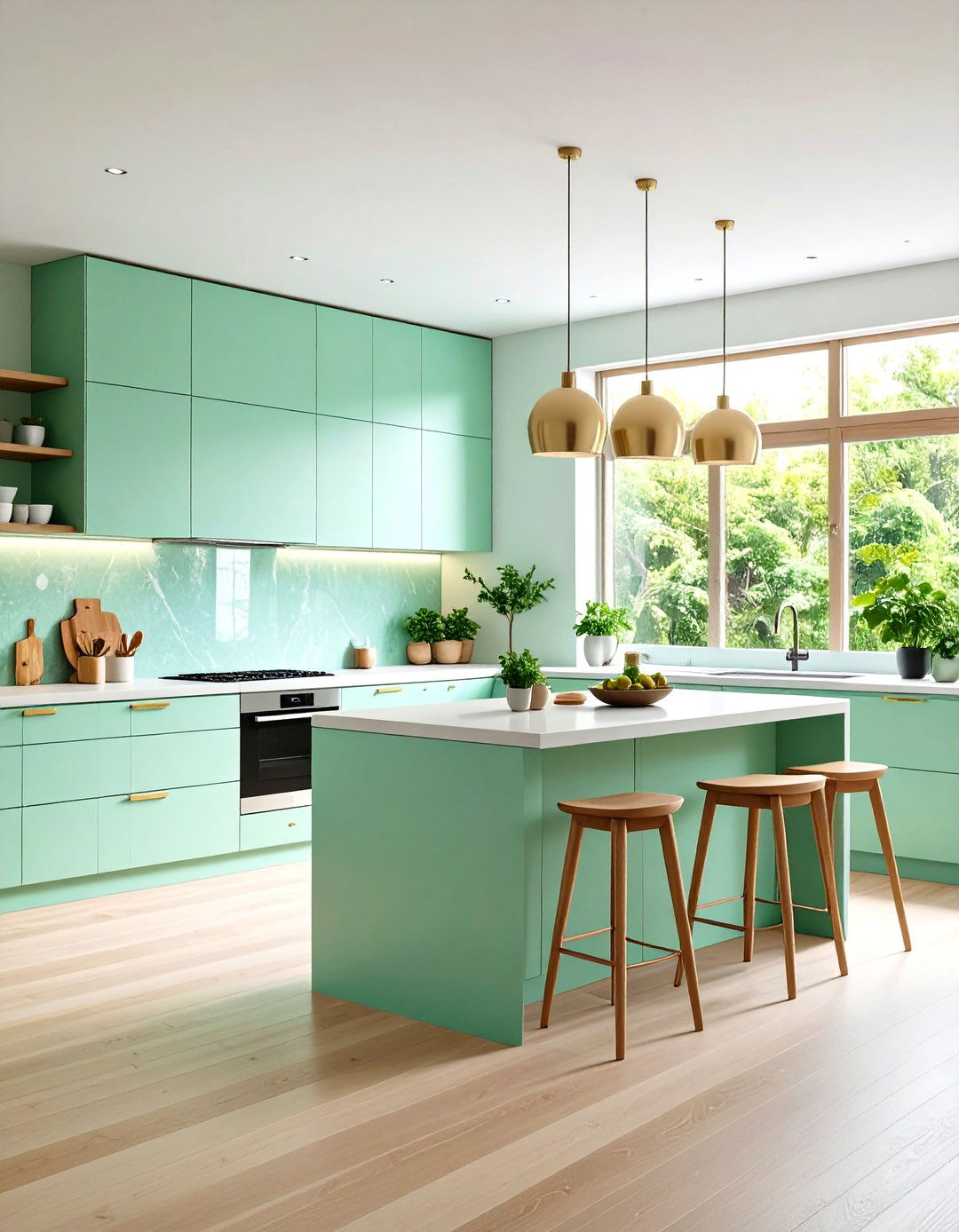
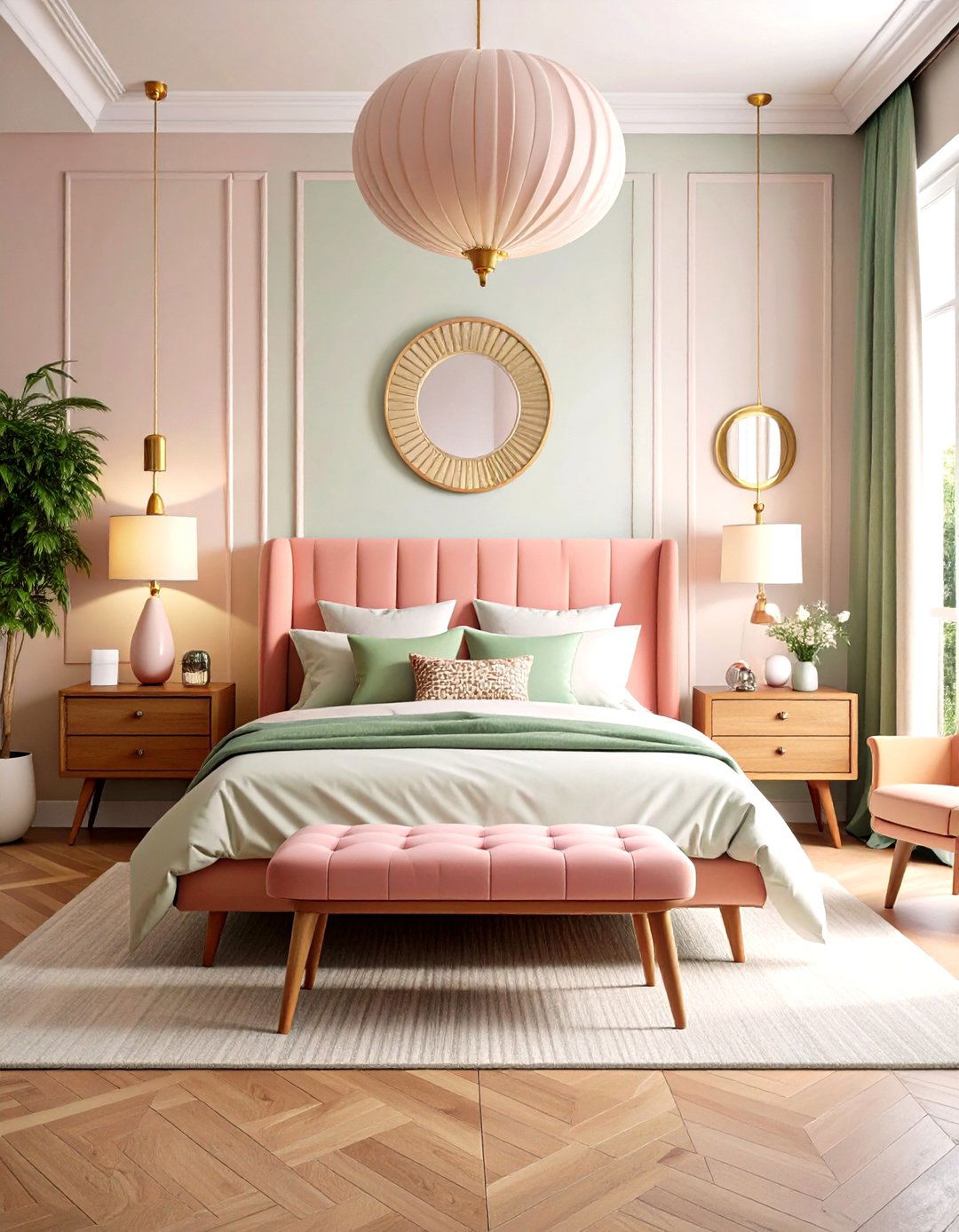
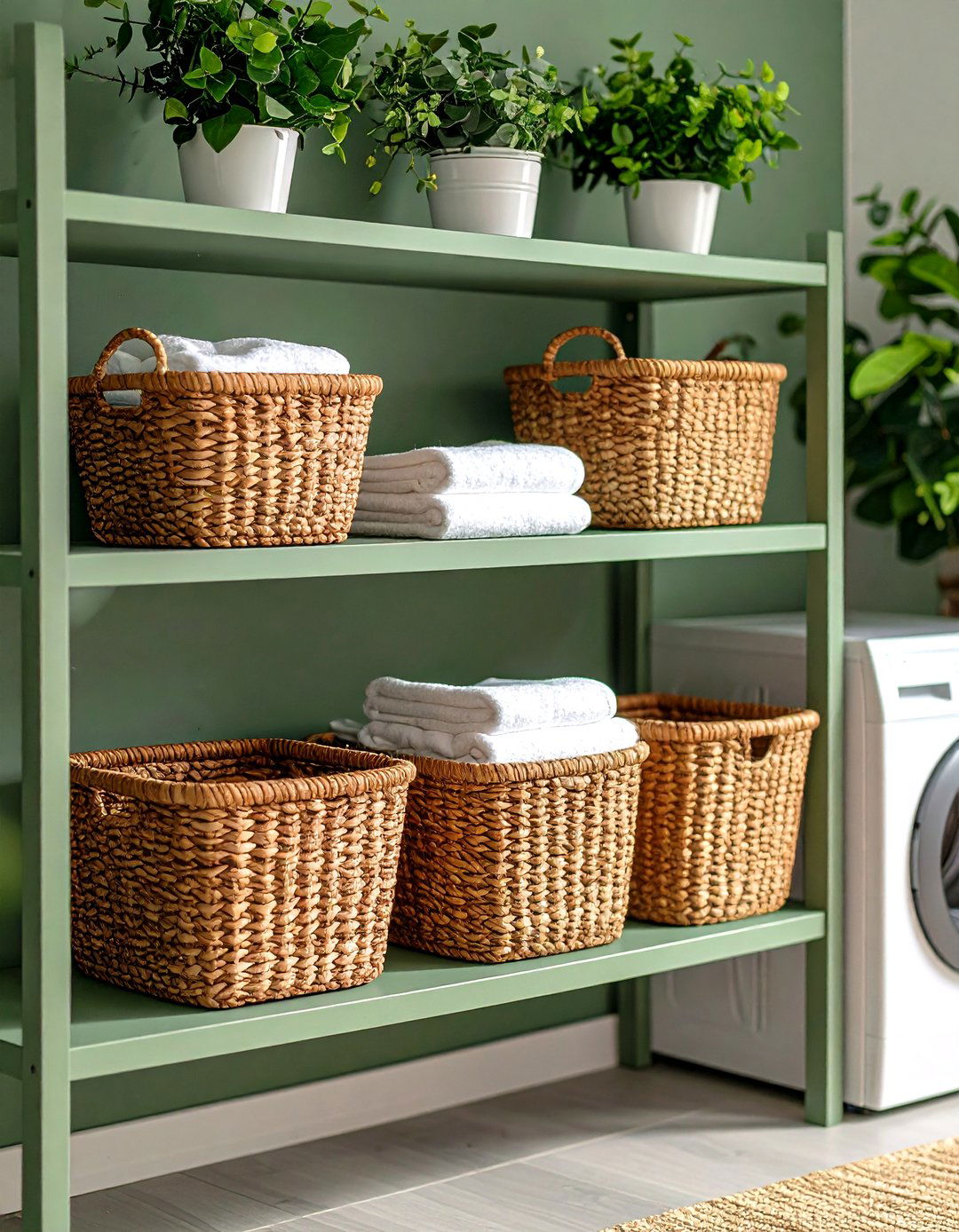
Leave a Reply